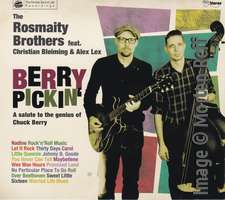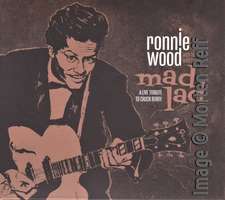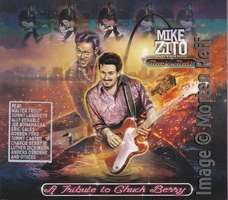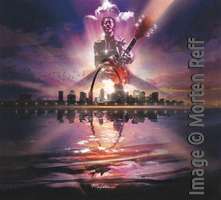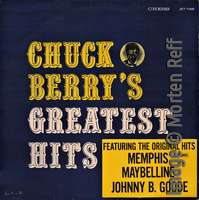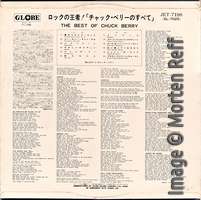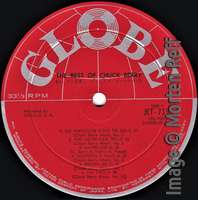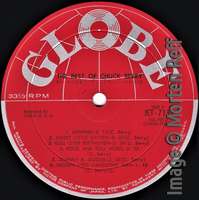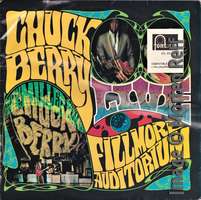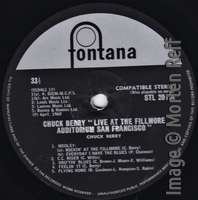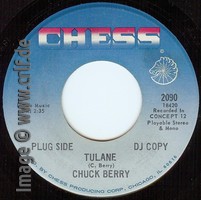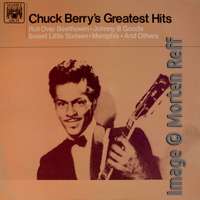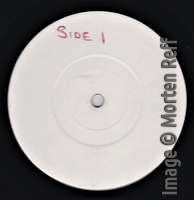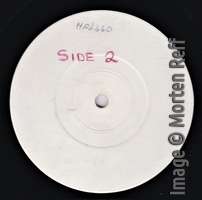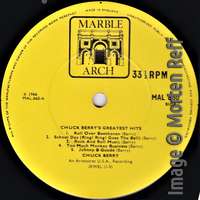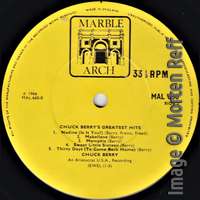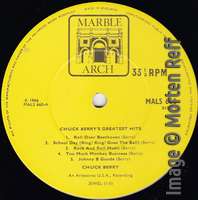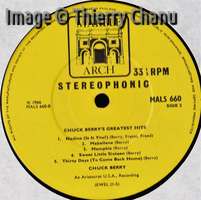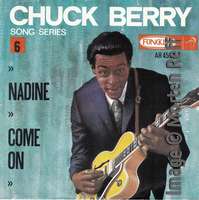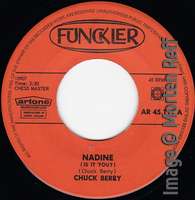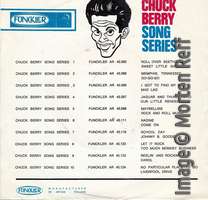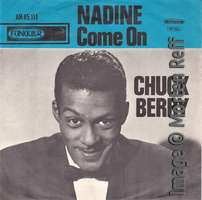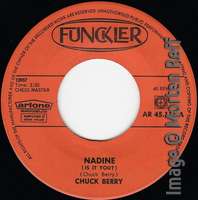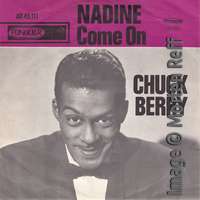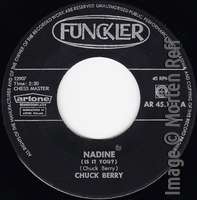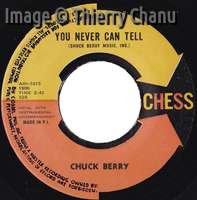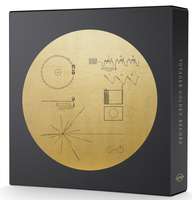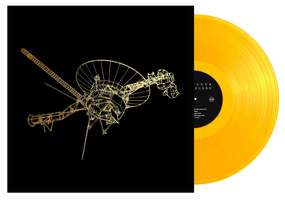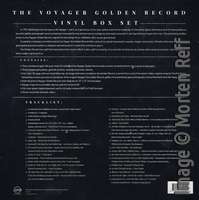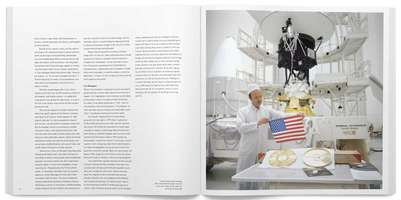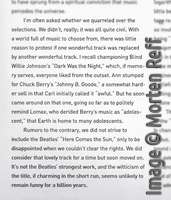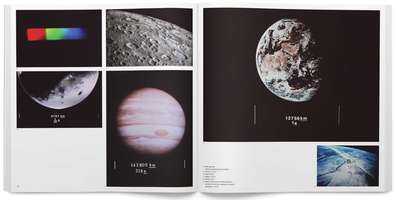Monday, February 10. 2020
CBID - Corrections and Additions to the Chuck Berry Cover Versions List
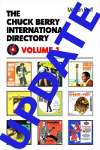
CBID is the Chuck Berry International Directory, a 2.200 page pile of Chuck Berry records information published in four volumes between 2008 and 2013. For details see the bibliography section of this site.
CBID is never complete as new records and CDs appear and some old rarities are discovered. This section presents interesting additions and corrections to CBID.
Today: Some corrections, one answer to a long open question and yet another list of cover versions to be added to the chapter on Chuck Berry covers in Volume 3.
It has come to my attention that âRoll Over Beethovenâ from 1964 by the Searchers is not actually this group but rather by Ian & The Zodiacs aka the Koppykats. The German LP referred to in the text on page 1494 seems like a Searchers album and nothing is mentioned that the track in question is actually not by this group. And not just that, six of the songs are by the Searchers and 6 songs by the Koppykats â page 1296 (aka Ian & The Zodiacs). Thatâs really too much monkey business.
Thanks to Peter Checksfield for this info.
On page 1650 (Vol. 4) Mystery Cover Version. Now finally it seems we have found the answer. A popular Canadian rock band called April Wine was the support act for the Rolling Stones when the Stones played in Toronto, Canada in 1977. Unfortunately I have not been able to find this track âLittle Queenieâ on the April Wine album âLive At The El Mocamboâ (1977). So maybe this single in disguise was a try to see what happened. Very strange though.
On page 1249 John Hill & The Retreads (USA) âJohnny B. Goodeâ must be erased as you will find the same entry on page 1449 as by The Retreds (USA) which by the way is the correct name. Itâs a garage rock version.
ANIMALS (UK)
See Volume 3, pages 1041-42 for biographical info.
Sweet Little Sixteen (3:04) 1966
Wee Wee Hours (3:55) 1965
2-CD set: Broadcasts 1964-1966 [Rhythm & Blues Records RANDB-057] • UK, 2019
I havenât been able to check if the âSweet Little Sixteenâ track on the LP R&B-13 is the same as the one above on this release. âWee Wee Hoursâ is a live recording from a radio session, and again Eric Burdon proves his ability as a singer of great power.
BALLROOM ROCKETS (Germany)
Aka The Rosmaity Brothers, Christoph (guitar) and Fabian (vocals, bass), plus René Lieutenant on drums.
Thirty Days (2:29) 2008
CD: Ready If Youâre Willinâ [Rhythm Bomb Records CDRBR-5682] • Germany, 2008
Straight ahead rockabilly version. See also The Rosmaity Brothers.
CLIFF BENNETT & THE REBEL ROUSERS (UK)
The band Rebel Rousers was formed in 1957 by Cliff Bennett. They released singles on the Parlophone label but it was first in 1964 that they got hit singles with a.o. âOne Way Loveâ and 1966 âGot To Get You Into My Lifeâ. The members consisted of a.o. Chas Hodges who would later team up with Dave Peacock as Chas & Dave.
Bye Bye Johnny [as âJohnny B. Goodeâ] (2:27) 1963 (mono)
Bye Bye Johnny [as âJohnny B. Goodeâ] (2:27) 1963 (stereo)
4 CD-set: Into Our Lives: The EMI Years 1961-1969 [EMI 50999 6 97388 2] • UK, 2009
Previously unissued. Itâs a tough and rockinâ goode version. Strange but it says âJohnny B. Goodeâ on the album. They couldnât tell the difference in 2009?
GRATEFUL DEAD (USA)
See Volume 3, page 1218-1220 for biographical info, and Vol. 4 page 2048.
If you look in Vol. 3 of CBID on the above pages youâll see that there are a huge number of entries by this group.
Especially regarding the Dickâs Picks series. It was organised by Dick Latvala who was the custodian of the Grateful Dead tape vault until his death in 1999. From 2000 it was overseen by David Lemieux until 2005 when the Road Trip series took over and lasted till 2011, and the Daveâs Picks started in 2012.
The thing is that there are almost a Berry song or three on every release and I feel it will take too much space. The Daveâs Picks series have now reached Vol. 32 so you can imagine how many covers we are talking about. I have included a few issues below to give you an idea, and they have also covered âRun Rudolph Runâ a couple of times (Christmas you know).
Around And Around (9:10) 1977 (live)
Johnny B. Goode (4:20) 1977 (live)
Promised Land (4:32) 1977 (live)
3 CD: Daveâs Picks Vol 1 -The Mosque, Richmond, VA â5/25/77 [Rhino / Grateful Dead R2-529201] • USA, 2012
Run Rudolph Run (3:43) 1971 (live)
3 CD: Daveâs Picks Vol.22 â Felts Forum, New York â12/7/71 [Rhino / Grateful Dead R2-557453] • USA, 2017
Run Rudolph Run (3:28) 1971 (live)
3 CD: Daveâs Picks Vol.26 âAlbuquerque Civic Auditorium, NM 11/17/71 [Grateful Dead R2-565049] • USA, 2017
Recorded live in Ann Arbor, Michigan, 14 December 1971. Bonus concert.
Around And Around (7:50) 1977 (live)
Johnny B. Goode (4:23) 1977 (live)
Promised Land (5:03) 1977 (live)
3 CD: Daveâs Picks Vol.29 âSwing Auditorium San Bernardino, CA [Rhino Records R2-573507] • USA, 2017
âJohnny B. Goodeâ recorded live at Robertson Gym, University Of California, Santa Barbara, CA 27 February 1977, bonus track.
Johnny B. Goode (3:55) 1973 (live)
Promised Land (3:22) 1973 (live)
3 CD: Daveâs Picks Vol.32 âThe Spectrum, Philadelphia, PA 3/24/73 [Rhino Records R2-573510] • USA, 2019
This would have to do. Volumes 1 â 2 â 3 - 4 â 5 â 7 â 8 â 11 â 12 â 16 â 18 â 20 â 21 â 23 â 24 â 25 â 28 â 31 also includes one or two Berry covers, such as Around And Around, Johnny B. Goode or Promised Land .
And on top of that thereâs a lot of other Grateful Dead releases, a.o. a series titled Europe â72 that includes some 24 volumes!!! which of course also includes Berry covers.
Itâs estimated that the group performed Berryâs songs around 1100 times !!! Quite a number (the info could itself fill a whole book).
RICHARD GRAY & THE FOUR BROTHERS (Australia)
This is not a new entry, see page 1221, but additional information and correction.
A white vocal quintet from Sidney. Musically, think Deep River Boys.
Maybellene (2:33) 1955
78: Philips P-37031 • Australia, 1955
KINKS (UK)
See Volume 3, page 1292 for biographical info.
Bye Bye Johnny (2:27) 1965 (live)
Little Queenie (1:48) 1964 (live)
2-CD set: Transmissions 1964-1968 [Audio Vaults AV-201809] • UK, 2019
âLittle Queenieâ recorded 7 September, 1964, BBC Saturday Club, Playhouse Theatre, London.
âBye Bye Johnnyâ French TV broadcast - Recorded live 24 April 1965 at the Palais De La Mutualite, Paris.
Again sorry to say, but thereâs something wrong with The Kinks and rockânâroll, they just donât match.
CHARLIE LILLY (USA)
Nadine (3:30) 1974
45: Revelation Records Ltd. AS-1027 • USA, 1974
The seller on eBay wrote that it was a garage 45, however, itâs more like a soul blues with harmonica. Itâs in stereo and was as printed on the label Recorded in the country at Appalachia Sound Recording Studios, Chillicothe, Ohio. The A-side is âMama Canât Sleepâ written by one Walt Cook.
MASTERâS APPRENTICES (Australia)
See Volume 3, pages 1347-1348 for biographical info.
Around And Around (2:55) 1966
Carol (2:34) 1966
Iâm Talking About You (1:56) 1966
Johnny B. Goode (2:27) 1966
Maybellene (2:02) 1966
Too Much Monkey Business (2:35) 1966
CD: From Mustangs To Masters, First Year Apprentices [Nickoff Records NCD-1] • Australia, 2004
21 previously unreleased tracks. They also did âRoute 66â (two versions) which is modelled after the Berry/ Stones versions. All recorded in April 1966 at The Garage. Sound quality is not perfect, and for fans only.

EARL PRESTON & The T.T.âs (UK)
Mersey Beat quintet who had one single out on Fontana in 1963, and was also featured on tracks by Eden Kane and Cy Tucker. The latter part of the group. Lead singer George Joseph Spruce from Liverpool took his stage name from his brother-in-law Earl and American artist Preston Epps.
Betty Jean (2:37) 1963
CD: Unearthed Merseybeat Vol. 3 [Viper CD-032] • UK, 2005
Previously unissued demo. Thanks to Peter Checksfield for this entry.
PRETTY THINGS (UK)
See Volume 3, page 1431 for biographical info.
Johnny B. Goode (1:42) 1964 (live)
CD Box set: Bouquets From A Cloudy Sky [Snapper SMABX-1029] • UK, 2015
Previously unissued track from the BBC 2 Live on the Beat Room, recorded December 1964. The box is a collectors item consisting of all their original albums on 11 CDs, a copy of an acetate (4 tracks), and rarities on 2 CDs, and 2 DVDs, plus memorabilia and a thick hardcover book. Released to commemorate the band's 50th Anniversary.
ROLLING STONES (UK)
See volume 3, pages 1475-1477 for biographical info.
Little Queenie (4:18) 1998 (live)
2 CD: Bridges To Buenos Aires [Eagle Rock RBCD-5407] • USA, 2019 (CD + Blue-Ray)
3 LP: Bridges To Buenos Aires [Eagle Rock 20451] • USA, 2019 (Black or blue vinyl)
Recorded live at River Plate Stadium, Buenos Aires, Argentina on 5 April 1998.
Donât know what happened but this one doesnât live up to the bandâs reputation. Thereâs something wrong with the drums and bass.
STORMY TEMPEST (UK)
Johnny B. Goode (2:38) 1989
45: Everbimes EVB-0071 • UK, 1989 (picture sleeve)
I did spot this on 45cat but havenât been able to find a link to listen to it or any info. Maybe a reader can?
Wednesday, January 15. 2020
CBID - new Chuck Berry tribute albums and songs

CBID is the Chuck Berry International Directory, a 2.200 page pile of Chuck Berry records information published in four volumes between 2008 and 2013. For details see the bibliography section of this site.
CBID is never complete as new records and CDs appear and some old rarities are discovered. This section presents interesting additions and corrections to CBID.
Today: Chapter 14 in Volume 2 describes tribute songs and albums. Here are some additions to this:.
ROSMAITY BROTHERS (Germany)
Fabian and Christoph Rosmaity, guitar and bass respectively featuring Christian Bleiming (piano) and Alex Lex (drums). The brothers have been playing together for over 20 years.
Let It Rock (1:50) / Thirty Days (2:27) / Carol (2:55) / You Never Can Tell (2:56) / Roll Over Beethoven (2:38) / Wee Wee Hours (4:22) / Johnny B. Goode (2:49) / No Particular Place To Go (2:36) / Nadine (4:02) / Sweet Little Sixteen (2:52) / Little Queenie (3:02) / Maybellene (2:34) / Worried Life Blues+ (3:06) / Promised Land (2:21) / Rock And Roll Music (2:42) â 2016
CD: Berry Pickinâ - A Salute To the Genius of Chuck Berry [The Rocket Sound Lab] • Germany, 2016
I do appreciate that the guys took the time and recorded an album with 14 Berry songs and one related. Unfortunately they almost sound like the originals, updated that is. The tracks that really work are the two blues oriented songs. Interesting to hear âWorried Life Bluesâ the Berry way. Itâs okay to record ones favourite Berry song(s) but since they have been recorded by almost whoâs who in the music business itâs therefore important to get a personal and different approach, like they did with âWee Wee Hoursâ.
See also The Ballroom Rockets.
RICHARD THOMPSON (UK)
See Volume 3, page 1181 under Fairport Convention for more info.
Guitar Heroes (7:40) â 2015
CD: Still [Propel Records PRPCD131] • UK, 2015
CD: Still [Fantasy Records FAN-37274 02] • USA, 2015
Here Thompson pays tribute to his guitar heroes. One of them being Chuck Berry, others being Django Reinhardt, James Burton, Hank Marvin (The Shadows) etc. In one verse he sings about Berry and imitates his guitar style.
RONNIE WOOD & His Wild Five (UK)
Ronald David Wood, singer, songwriter, guitarist, author and radio personality, born in 1947. Today best known as a member of The Rolling Stones since 1975, but also as a member of Faces and The Jeff Beck Group.
Tribute To Chuck Berry (2:04) 2018 (live)
Iâm Talking About You [as "Talking About You"] (3:07) 2018 (live)
Mad Lad+ (3:13) 2018 (instr) (live)
Wee Wee Hours (4:46) 2018 (live) feat. Imelda May
Almost Grown (2:50) 2018 (live)
Back In The USA (3:58) 2018 (live)
Blue Feeling (3:52) 2018 (instr) (live)
Worried Life Blues+ (5:28) 2018 (live)
Little Queenie (4:27) 2018 (live)
Rock And Roll Music (2:17) 2018 (live) feat. Imelda May
Johnny B. Goode (3:34) 2018 (live)
CD: Mad Lad â A Tribute To Chuck Berry [BMG 538527702] • UK, 2019
LP: Mad Lad â A Tribute To Chuck Berry [BMG 538527711] • UK, 2019
Box-set Deluxe Edition: Mad Lad â A Tribute To Chuck Berry [BMG 538542250] • UK, 2019
CD: Mad Lad â A Tribute To Chuck Berry [BMG 4050 538527704] • USA, 2019
The box-set above contains the LP (180G vinyl), CD and album cover art print. Nothing fancy really. Playing time of around 40 minutes is way too short today. But I like the music and Imelda May lifts the result on the two tracks sheâs involved in. She also sings backup vocals on âAlmost Grownâ. Irritating that the running time of the tracks are completely missing.
The tribute is okay but nothing to brag about, and Ronnie is no quality singer but heâs a tremendous guitar player. The Berry sound is all in there.
Interesting to notice the two instrumentals, especially âMad Ladâ since it becomes the very first cover of this. Although not written by Berry it is credited to him on the album. âBlue Feelingâ was done by The Trashmen in 1966 (page 1568).
On YouTube youâll find Ronnie and Imelda doing âJohnny B. Goodeâ on BBCâs Later with Jools Holland show. Thereâs also videos of Ronnie playing âMad Ladâ and Ronnie and Imelda with âWee Wee Hoursâ.
Apart from Imelda May Ronnie is helped by the likes of Ben Waters (keyboards), Dion Egtved (bass) and Dexter Hercules (drums). Augmented by Antti Snellman on tenor saxophone and Tom Waters on alt saxophone. Also Amy Mayes and Denise Gordon are doing backup vocals on some tracks. All tracks were recorded at the Tivoli Theatre, Wimborne Minster, Dorset in 2018. It doesnât say when, though. Produced by Ronnie Wood.
MIKE ZITO And Friends (USA)
Mike Zito, singer, songwriter, guitarist and producer from St. Louis, Missouri, born in 1970. Since 1998 when his first CD âBlue Roomâ came out heâs released some 15 albums.
St. Louis Blues+ (3:19) 2019 - Charlie Berry III
Rock And Roll Music (3:08) 2019 - Joanna Connor
Johnny B. Goode (3:49) 2019 - Walter Trout
Wee Wee Hours (5:25) 2019 - Joe Bonamassa
Memphis, Tennessee [as âMemphisâ] (3:05) 2019 - Anders Osborne
I Want To Be Your Driver (2:55) 2019 - Ryan Perry
You Never Can Tell (4:00) 2019 - Robben Ford
Back In The USA (3:02) 2019 - Eric Gales
No Particular Place To Go (2:50) 2019 - Jeremiah Johnson
Too Much Monkey Business (3:13) 2019 - Luther Dickinson
Havana Moon (4:21) 2019 - Sonny Landreth*
Promised Land (3:29) 2019 -Tinsley Ellis*
Down Bound Train (4:03) 2019 - Alex Skolnick
Maybellene (2:55) 2019 - Richard Fortus
School Day (3:02) 2019 - Ally Venable
Brown Eyed Handsome Man (2:16) 2019 - Kirk Fletcher & Josh Smith
Reelinâ And Rockinâ (4:01) 2019 - Tommy Castro*
Let It Rock (2:26) 2019 - Jimmy Vivino
Thirty Days (2:56) 2019 - Albert Castiglia
My Ding-A-Ling(+) (3:16) 2019 - Kid Andersen* **
CD: RockânâRoll â A Tribute To Chuck Berry [Ruf Records RUF-1269] • Germany, 2019
LP: RockânâRoll â A Tribute To Chuck Berry [Ruf Records RUF-2059] • Germany, 2019
The LP contains 15 tracks, but you can download the 20 tracks for free. The following songs are NOT on the 180 gram audiophile vinyl pressing: I Want To Your Driver / No Particular Place To Go / Down Bound Train / School Day / Brown Eyed Handsome Man.
Some of the artists are already in the covers* or soundalikes** sections, or like Jimmy Vivino in the Johnnie Johnson discography (Vol. 2). So what should one say about such a gigantic release, I mean 20 tracks, 20 different guitar players and singers! This album might help younger people to get to know Berryâs music. In that sense the album is very important and a rockinâ goode one.
âMemphisâ is true to Berryâs original, not the same but simple in structure and sound. However, most of the others are filled with musical instruments, sometimes a little too much. Chuckâs grandson follows very much the arrangement his grandfather did in 1965. Well performed. Luther Dickinson makes it swing on âToo Much Monkey Businessâ and even includes the final lyrics with I donât want your botheration, get away leave me be⊠which is so often forgotten. âYou Never Can Tellâ is without the identical piano playing but remember this is a guitar based album. âDown Bound Trainâ is strange and even more âscaryâ than Berryâs own, think 63 years difference. âSchool Dayâ is quite goode, one of two females on the album, and Ally Venable is doing a very decent job of it.
The worst will have to be âWee Wee Hoursâ and Joe Bonamassa. That guitar playing destroys the whole tune. After just a few seconds when I heard it I said what the fâŠ? I have played the album a few times but skip this track every time. What were they (Zito and Joe) thinking? A reviewer said it was a highlight(!), well in that case we are living in two different worlds. Maybe because that kind of guitar playing to me itâs just noise.
On the contrary, check out Mike Zito and Walter Trout on YouTube performing âJohnny B. Goodeâ in a garage!!!
Again the running time on each track is missing. Thatâs an European problem on many releases.
Of course an artist wants to cover a Berry tune that most people know so itâs interesting that songs like âI Want To Be Your Driverâ, âHavana Moonâ and âDown Bound Trainâ were chosen, but why Ding-A-Ling? Although his biggest hit, unfortunately, it doesnât give Berry nor Andersen the best of credits.
The Mike Zito band is as follows on all tracks: Mike Zito (vocals, guitar), Lewis Stephens (keyboards), Terry Dry (bass, percussion, vocals) and Matthew Johnson (drums, percussion, vocals). Recorded at Marz Studios in Nederland, Texas, December 2018 â July 2019. Produced by Mike Zito.
Twenty Berry songs covered and you think where are âSweet Little Sixteenâ, âRoll Over Beethovenâ, âLittle Queenieâ, âBye Bye Johnnyâ, âCarolâ, âAround And Aroundâ, âIâm Talking About Youâ and âNadineâ? Well that gives you an idea of how many classic rockânâroll songs Berry created.
However, again on YouTube you can see and hear Mike Zito and Joe Louis Walker doing five and a half minutes of âAround And Aroundâ at the Casselberry Craft Beer & Blues Fest 2019 in Casselberry Florida.
I like the front cover and also the image of Berry on top of the St. Louis skyline and the Gateway Arch painted by Rip Kastaris. A beautiful touch to the memory of Chuck Berry.
Late addition and a little enlightening on the âWee Wee Hoursâ track.
On the Guitar World (magazine) site thereâs an indept interview with Zito explaining what went on in preparing for this album. Regarding the Joe Bonamassa version of âWee Wee Hoursâ he had this to say:
We started to work on these basic tracks at the end of 2018 and the beginning of January 2019 My group cut basic rhythm tracks and then e-mail them to the guitarists in question and have them add their parts. Joe Bonamassa texting him: âHey man, Iâm getting ready to record this track. Do you want me to play it tradional or do you want fire and fury?â I said, I want fire and fury, by all means. And he just blew the doors off.
Well now we know why it ended up sounding like it did. I still donât like it, but thatâs not the point here. They got it how they wanted it and thatâs what counts.
Tuesday, January 14. 2020
CBID - Additions to the Chuck Berry discographies for Japan and South Africa

CBID is never complete as new records and CDs appear and some old rarities are discovered. This section presents interesting additions and corrections to CBID.
Today: Sometimes it takes decades until I am finally able to see and show a specific Chuck Berry album. And sometimes getting one requires me to rewrite a description.
JAPAN
CHUCK BERRYâS GREATEST HITS
Globe (Chess) JET-7198 • 1964
No Particular Place To Go / You Never Can Tell / Maybellene / Nadine / Brenda Lee / You Two / Memphis, Tennessee / Sweet Little Sixteen / Roll Over Beethoven / Rock And Roll Music / Johnny B. Goode / Brown Eyed Handsome Man (1961 version)
Referring to page 374. The tracks are of course not the same as the US release Chess LP-1485, as you can easily see. I didnât have this album back then and unfortunately I messed it up when writing. Anyway, it really says The Best of Chuck Berry on the back cover and on the label. As far as I can see this was the very first Berry LP issued in Japan. Including âNo Particular Place To Goâ and âYou Never Can Tellâ were wise, however, âYou Twoâ and âBrenda Leeâ were not, even though they were B-sides of the first two tracks. The front cover is the same as the US LP-1485 with the yellow sticker.
For some strange reason they included the 1961 version of âBrown Eyed Handsome Manâ (from the On Stage album with the audience noise).
This particular album was also issued in Taiwan in two different disguises, see pages 475-476, and also this blog.
SOUTH AFRICA
LIVE AT THE FILLMORE AUDITORIUM
Fontana STL-201 • April 1968
See page 2019 in Volume 4. Since I finally got a copy, I would like to show you the cover and label here.
Thursday, December 19. 2019
Thierry Chanu (â 22. 11. 2019)
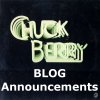
A French reader showed us with a few images and sentences how little we knew. Thierry had so many records and variants we hadn't seen before. It was a pleasure to be enlightened by him again and again.
During the five years that followed, you have seen Thierry's name in articles and images on this blog many times. He was also a great help checking and correcting our database of all Chuck Berry recordings on this site. Thierry became a valued fellow researcher always hunting for details on recordings, releases, and concerts.
| All of a sudden and totally unexpected |
| Thierry Chanu |
| passed away on 22 November 2019 at the age of only 60 years. |
| R.I.P., Thierry! We will surely miss you! |
| Dietmar, Morten, Fred, Arne |
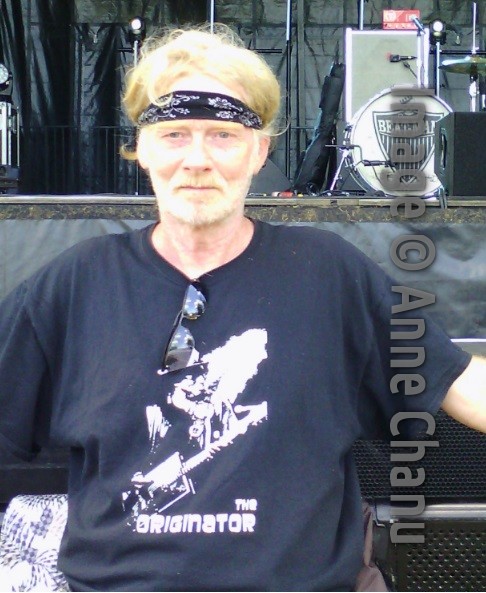
Thierry's knowledge about record releases was unmatched. Not even Morten went into this level of detail when researching releases. During the last years Thierry was of tremendous help in our research of Chuck Berry recordings. Berryâs music has lost one of its most loving collectors and knowledgeable persons.
Many thanks to Thierry's wife Anne and her sons for all their support!
Friday, October 18. 2019
Chuck Berry in Stereo
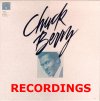
When Jack Wiener in 1957 built the famous Sheldon Recording Studios at 2120 South Michigan Av. in Chicago where Berry's most important recordings were made, he had provisions to record in Stereo. However, this “double-mono” system was not intended to create stereo recordings but instead mainly thought of as a secondary backup mono system in case some gear failed.
We do not know if any of Berry's early Chess recordings were recorded in Stereo. What we do know is that at least in February 1960 Stereo finally made it to the recording process. This is because “Diploma For Two”, recorded Feb. 15th, 1960, is available as a true stereo version which was released in 1967 on a British album (“You Never Can Tell”, Marble Arch MALS-702).
As Remastering and Restoration Engineer Steve Hoffman tells, the Chess studios got a four-track recording machine in 1959. They now started to record everything in both Mono and Stereo concurrently. It was common then to do a dedicated mono mix on one of the four tracks with the other three tracks used by three stereo channels (left, center, right). [https://forums.stevehoffman.tv/threads/chuck-berry-rock-n-roll-rarities-and-more-rock-n-roll-rarities-info.854690/]
However, Andy McKaie (who for instance created the Berry 4-CD sets on Hip-O Select and won the Grammy award “Best Historical Album” for the 1988 “Chuck Berry — The Chess Box”) is quoted saying,
As far as mono versus stereo goes, it seems that if they recorded something specifically for an album in the '60s it was recorded and mixed in stereo. If recorded for a single, it's a toss-up, and for extended periods of time, they never bothered to do anything but mono mixes. [Some specific non-Berry] '63 sessions [...] were recorded and assembled for an album, but only a mono assembly was done and the multi-tracks are either unmarked in our vault or missing. The running masters from those sessions are even only in mono, whereas I have found running masters from 1959 Howlin' Wolf that are in stereo. Then again, nothing but mono exists from Wolf's Red Rooster in '61, though there's a stereo master for Shake for Me from same session. The inconsistency drives me nuts, too, but I can only issue what we have available to me to issue. Sometimes life is like that. — Chess used to keep a two track running for sessions, even when they were doing multi-track sessions. Sometimes the two track seemed to be in mono, sometimes stereo. Before he died, Ron Malo told me that Chess really didn't care about or understand stereo, so if an engineer or a producer didn't dwell on it, what you got was a tossup. Leonard did the Muddy sessions, except for the concept albums, and according to Ron, he really wasn't interested in stereo - his notion was that he was making a single to sell... [https://forums.stevehoffman.tv/threads/for-steve-stereo-remixes.1192/page-2]
After MCA Records had distributed Chess records (including Berry re-issues) since 1983, the company finally in 1984 bought the Chess/Checker/Cadet catalog from Sugar Hill Records, then owner of the Chess archives (whereas the sale by itself is an interesting story resulting in multiple law suits). In 1985 Steve Hoffman got access to the original four-track master tapes. He used some of these for MCA's “Rock 'n' Roll Rarities“ (Chess 2-LP set 92521, March 1986) and “More Rock 'n' Roll Rarities” (Chess LP 9190, August 1986) albums. This resulted in the very first stereo recording by Chuck Berry we know of: “I Got To Find My Baby” originally recorded Feb. 12th, 1960. One should note, though, that Hoffman was using the original three Stereo tracks to newly mix them to create the two Stereo channels on disk. Thus this is not an original 1960s mix if there ever was one.
Steve Hoffman later said:
I really dislike my stereo remixes on the Chuck Berry discs I did. I was way too "gentle" with them. They needed a lot more compression and general nasty stuff to make them sound like their mono counterparts. At the time, I fell in to the trap that usually gets all "remixers" of old classic stuff: The urge to play God. In other words, to make things sound "better" than the original mixes, and to share with all of you music lovers the way the actual multi-track tapes sound. This (in hindsight) is a mistake, because the multi's are just work parts, and sound way too clean to be of any valid interest or use in any thing other than a historical context. If the real mixes vanish just because they are mono, or sound a bit rough, well, this would be a shame... — I didn't realize this until 1986 when my friend and reissue expert Diana Reid Haig explained to me that the "original mix is THE mix, regardless of how bad it sounds, and that anything else is just playing God". She was right. I've never heard a remix that has the energy, life and as good a "vibe" as the original, mono or stereo. — I love stereo. Don't misunderstand me. Stereo is great. If a song or album was only released in mono, and stereo versions can be created, it's fine with me, as long as the "spirit" of the original mix is kept. [https://forums.stevehoffman.tv/threads/for-steve-stereo-remixes.1192/]
So Hoffman created stereo mixes of songs previously available only in Mono. Remembering the technical difficulties in working with 25-year-old tapes, Steve Hoffman told me:
In the early stereo period (when they got the Ampex 4-track until maybe the end of 1961), the music was recorded using the Ampex Master EQ button on the machine. This took it off the NAB standard and made everything sound screechy. When played back, of course, the screech vanished and with it (so the theory goes) some of the tape hiss as well. Only problem? If you didn't have the exact same machine as the one in the studio during recording, the playback was never right. I had to really consult with many Ampex historians in order to get the right EQ to play back those bad sounding 1/2" tapes.
About the other recordings from these two February 1960 sessions Steve Hoffman told me:
I'm certain that all songs from those sessions were there in 1/2". I chose the songs to put on the Rarities because either feedback from fans or I personally liked them. I wanted the songs that sounded more Chuck Berry-like. I took the 1/2" reels into the studio to listen and picked the songs that way. Didn't have the time or budget to do a complete stereo reduction of all the songs nor the research, since the paperwork was so incomplete and they had NO idea what was on many of the reels.
Even though they still existed in 1985, by today the session tapes are lost, as all of the Chess masters were destroyed in the burning of the Universal tape vaults in 2008.
Some more stereo recordings from 1960 and 1961 have survived on Marble Arch records and on Hoffman's 1986 albums: “Bye Bye Johnny”, “Run Around”, “Down The Road A Piece”, “I'm Talking About You”, “Go Go Go”, an alternate take of “Route 66”, and the 1961 version of “Brown-Eyed Handsome Man”. Contemporary, all these were released in Mono only. The stereo version of “Come On”, which is a different recording than the one on the mono single, has been mixed two times, one during the 1960s for a Marble Arch release, one in 1985 for the Rarities album.
List of Chuck Berry stereo recordings from 1960/1961:
| Recording Date | Song | Stereo Release | Note |
|---|---|---|---|
| 12.2.1960 | I Got To Find My Baby | Chess CH-9190 | |
| 15.2.1960 | Diploma For Two | Marble Arch MALS-702 | |
| 29.3.1960 | Bye Bye Johnny | Chess CH2-92521 | |
| 29.3.1960 | Run Around | Marble Arch MALS-702 | |
| 12.4.1960 | Down The Road A Piece | Chess CH-9190 | |
| 19.1.1961 | Route 66 (alt. take 11) | Chess CH-9190 | |
| 19.1.1961 | I'm Talking About You | Chess CH-9190 | |
| 3.8.1961 | Come On (alt. take) | Marble Arch MALS-611 | Remix on Chess CH2-92521 |
| 3.8.1961 | Go Go Go | Chess CH-9190 | |
| 3.8.1961 | Brown-Eyed Handsome Man | Chess CH-9190 |
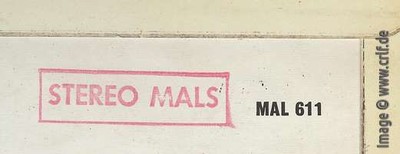
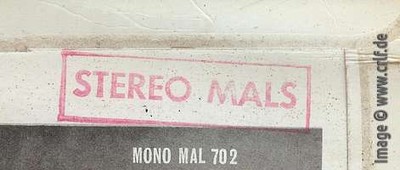
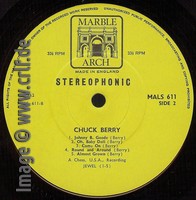
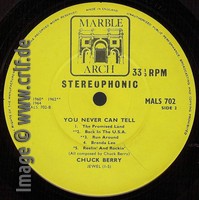
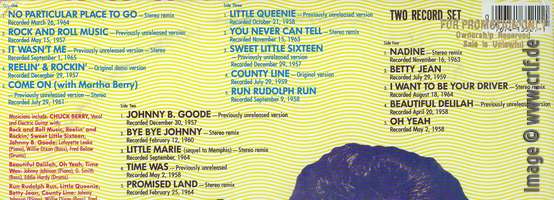
MALS 611 and 702 labels and cover segments, Rarities cover segment
When Berry returned to the recording studio in January 1964, the industry had changed. Stereo recording was now common and albums were sold in stereo versions along with the mono versions (though at a higher price). According to Steve Hoffman, Chess still recorded on four-track tapes, but now used all four tracks to record separated segments of the song (e.g. vocal, guitar, piano and rhythm).
Mono versions of the songs were still needed, though. Since record player cartridges often could not play the stereo records, companies still produced mono albums. And singles were all-mono anyway. Since the original session tape was now multi-tracked, there were two ways to create a mono version: You could take the original multi-track and mix a dedicated mono version like you did with the stereo version. Or you could mix the stereo version first and then combine the two stereo channels into a single mono channel. This is called “folding down the Stereo”. A folded-down stereo results in a release on which the center instruments (which are on both stereo channels) are much louder than the left and right instruments (which are only on one channel). At least for some songs Chess used both techniques. The so-called “UK mix” (on Chess CRL-4005) of “Jamaica Farewell” is a dedicated mono mix, while the “US mix” (on Chess LP-1495) is a fold-down from the stereo mix (with more prominent vocals). The two sound that different, early discographies had them listed as different takes.
Starting from “Nadine”, we find Berry's recordings both as a mono mix or fold-down (on singles and mono albums) and as a stereo mix (on stereo albums). In the US the stereo versions were on the Chess albums numbered with an LPS prefix, while the mono versions were on the Chess albums numbered just with an LP prefix. For instance “His Daughter Caroline” is on “Chuck Berry In London” Chess LP-1495 in Mono and on LPS-1495 in true Stereo; “No Particular Place To Go” is on “St. Louis To Liverpool” Chess LP-1488 in Mono and on LPS-1488 in true Stereo.
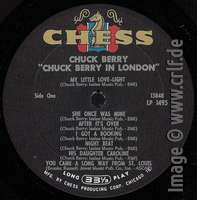
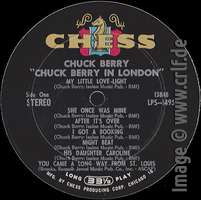
CHESS LP-1495 and CHESS LPS-1495 labels
Note that Steve Hofmann re-mixed “No Particular Place To Go” for the 1986 Rarities album (Chess LP 92521) thus creating a different Stereo mix. Steve was aware of the original mixes but tried to make it better:
I would have been able to duplicate the original mono or stereo mix of the Chuck Berry stuff. I just didn't WANT to. I wanted to stay far away from the feel of the original mixes; why bother to remix them? I had some cockeyed notion of "revealing" what it must have sounded like in the studio actually recording stuff, before all of those nasty "compromises" like dynamic range compression, detail obscuring echo and tonal enhancing equalization came into the picture. Problem is, as we know, those things actually MAKE the mix special. Oh well. What I mixed sounds to me these days like good pre-mix demo versions. Heh. Better than nothing I guess... — What I don't like, is making a new stereo mix where the original stereo mix works just fine. For what reason do this? Ego, usually. I went down that road. All engineers do. Can't be helped. In all cases (expect one, I guess, Simon & Garfunkel's PSRT), I can spot a remix like a dead skunk: Beloved levels are different, compression is less, or more. Echo is digital or too much, or not enough, EQ is radically changed. In most cases, the mixes sound "modern". Geez I hate that. Usually the hard left/right/center has been changed. [https://forums.stevehoffman.tv/threads/steve-if-you-had-do-re-do-a-cd-which-one-would-it-be.16949/ and https://forums.stevehoffman.tv/threads/for-steve-stereo-remixes.1192/ ]
Where Hoffman had access to the original four-track session tapes, he could rearrange the various instruments to what would become the left and right stereo channels. He did so with all his remixes except for “You Never Can Tell”. A reason may be that on this song Berry's vocal had been overdubbed in the chorus sections of the song. If there was no separate track left for the vocal overdub, the overdubbing was probably done to a final two-track stereo mix. As Hoffman told me:
I liked the original stereo mix and discovered that the stereo ALBUM master was really just a dub with extra echo of the original two-track stereo album mixes (marked "DO NOT USE"). So, of course I used the version with less echo. I think if you will compare you will find that the version I used with less echo is more pleasing to the ear.
On other songs such as “It Wasn't Me”, the remix was done from the original non-overdubbed session tapes, on “Little Marie” the vocal and guitar overdub was obviously on a separate track on the tape as Hoffman moved it around in his remix.
Almost all of Berry's Chess recordings made between 1964 and 1966 exist in true Stereo as well as in mono mixes. The original Chess albums were issued in both Mono and Stereo, the original Chess singles were issued in Mono only.
List of Chuck Berry stereo recordings from 1964 to 1966:
| Recording Date | Song | Mono Release | Stereo Release | Note |
|---|---|---|---|---|
| 7.1.1964 | Nadine | Chess 1883 | Chess 1883 light-blue re-issue (1970s) | Remix on Chess CH2-92521 |
| 7.1.1964 | You Never Can Tell | Chess LP-1488 | Chess LPS-1488 | “Remix” on Chess CH2-92521 is original mix without the extra echo. |
| 7.1.1964 | The Little Girl From Central | Pye Intl. NPL 28039 | Marble Arch MALS-702 | |
| 7.1.1964 | Things I Used To Do | Chess LP-1488 | Chess LPS-1488 | |
| 7.1.1964 | Fraulein | Pye Intl. NPL 28031 | MCA MCD-30487 (1993) | |
| 7.1.1964 | Lonely All The Time | Pye Intl. NPL 28031 | Chess CH6-80001 (1988) | |
| 7.1.1964 | O Rangutang | Chess 1883 | n.a. | |
| 20.2.1964 | Big Ben Blues | Pye Intl. NPL 28039 | Marble Arch MALS-702 | |
| 20.2.1964 | The Promised Land | Chess LP-1488 | Chess LPS-1488 | Remix on Chess CH2-92521 |
| 20.2.1964 | Brenda Lee | Chess LP-1488 | n.a. | The Stereo mix on Chess LPS-1488 is the Mono master with defects on the two Stereo channels. |
| 26.3.1964 | No Particular Place To Go | Chess LP-1488 | Chess LPS-1488 | Remix on Chess CH2-92521 |
| 26.3.1964 | You Two | Chess LP-1488 | Chess LPS-1488 | |
| 26.3.1964 | Liverpool Drive | Checker LP-2991 | Checker LPS-2991 | |
| 4.1964 | Chuck's Beat | Checker LP-2991 | Checker LPS-2991 | |
| 4.1964 | Bo's Beat | Checker LP-2991 | Checker LPS-2991 | |
| 16.8.1964 | Little Marie | Chess LP-1488 | Chess LPS-1488 | Remix on Chess CH2-92521 |
| 16.8.1964 | Go, Bobby Soxer | Chess LP-1488 | Chess LPS-1488 | |
| 16.12.1964 | Lonely School Days | Chess 1926 | n.a. | |
| 16.12.1964 | His Daughter Caroline | Chess LP-1495 | Chess LPS-1495 | |
| 16.12.1964 | Dear Dad | Chess LP-1495 | Chess LPS-1495 | |
| 16.12.1964 | I Want To Be Your Driver | Chess LP-1495 | Chess LPS-1495 | Remix on Chess CH2-92521 |
| 16.12.1964 | The Song Of My Love | Chess LP-1495 | Chess LPS-1495 | |
| 16.12.1964 | Butterscotch | Chess LP-1495 | Chess LPS-1495 | |
| 9.1.1965 | After It's Over | Chess LP-1495 | Chess LPS-1495 | |
| 9.1.1965 | Why Should We End This Way | Chess LP-1495 | Chess LPS-1495 | |
| 9.1.1965 | You Came A Long Way From St. Louis | Chess LP-1495 | Chess LPS-1495 | |
| 9.1.1965 | She Once Was Mine | Chess LP-1495 | Chess LPS-1495 | mono is faded earlier |
| 9.1.1965 | Jamaica Farewell | Chess CRL-4005 | Chess LPS-1495 | mono versions are faded, mono on Chess LP-1495 is a fold-down of the stereo version |
| 31.1.1965 | My Little Love-Light | Chess LP-1495 | Chess LPS-1495 | |
| 31.1.1965 | I Got A Booking | Chess LP-1495 | Chess LPS-1495 | |
| 31.1.1965 | St. Louis Blues | Chess LP-1495 | Chess LPS-1495 | |
| 1.9.1965 | Run Joe | Chess LP-1498 | Chess LPS-1498 | |
| 1.9.1965 | It's My Own Business | Chess LP-1498 | Chess LPS-1498 | |
| 1.9.1965 | One For My Baby | Chess LP-1498 | Chess LPS-1498 | |
| 1.9.1965 | Every Day We Rock & Roll | Chess LP-1498 | Chess LPS-1498 | |
| 1.9.1965 | My Mustang Ford | Chess LP-1498 | Chess LPS-1498 | Remix on Chess CH-9190 |
| 2.9.1965 | Merrily We Rock & Roll | Chess LP-1498 | Chess LPS-1498 | |
| 2.9.1965 | Vaya Con Dios | Chess LP-1498 | Chess LPS-1498 | |
| 2.9.1965 | Wee Hour Blues | Chess LP-1498 | Chess LPS-1498 | |
| 3.9.1965 | It Wasn't Me | Chess LP-1498 | Chess LPS-1498 | Remix on Chess CH2-92521 is of original recording without overdubs |
| 3.9.1965 | Ain't That Just Like A Woman | Chess LP-1498 | Chess LPS-1498 | Remix on Chess CH-9190 |
| 3.9.1965 | Right Off Rampart Street | Chess LP-1498 | Chess LPS-1498 | |
| 3.9.1965 | Welcome Back, Pretty Baby | Chess LP-1498 | Chess LPS-1498 | |
| 3.9.1965 | Sad Day — Long Night | Chess CRL-4506 | Chess CH6-80001 (1988) | |
| 13.4.1966 | Ramona, Say Yes | Chess 1963 | n.a. | Stereo Mix on Chess CH6-80001 is of original recording without overdubs |
| 13.4.1966 | Viva Rock & Roll | n.a. | Chess CH-50008 (1971) | |
| 13.4.1966 | Lonely School Days | Chess 1963 | Chess CH-50008 (1971) |
(Those studio recordings from this period which were first released on the HIP-O Select and Bear Family boxes are omitted from this list as they are only available in Stereo.)
In 1967 when Mercury released their first Chuck Berry album, discussions in the industry had been heated. The companies wanted to get rid of the additional effort to create both stereo and mono versions of the same album. Most of the record players were now able to play mono and stereo records alike. However, record buyers did not necessarily know and were still asking for the cheaper mono albums.
Mercury was among the first companies to play a simple trick on their customers: They pressed stereo albums only but placed some of them in a jacket claiming Mono. Therefore Chuck Berry's first Mercury album “Golden Hits” (1967) came in two different sleeves: Mercury MG-21103 claims to be Mono, Mercury SR-61103 claims to be Stereo. Both jackets however contained the exact same disk etched “2/61103 A/B” (later pressings had just “SR-61103” in multiple variations). According to Thierry Chanu, “Golden Hits” was issued in Mono only in France (Mercury 124.033 MDL).


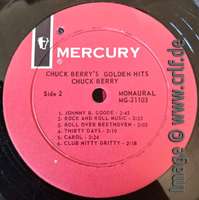


Mercury MG-21103 and SR-61103 labels and cover segments and the deadwax etching which is identical on both
Note that one track on Mercury MG-21103/SR-61103 is not a true stereo version. “Club Nitty Gritty” had been mixed to Mono for the 1966 single release. Instead of using/mixing a true stereo version for the album release, Mercury “electronically reprocessed for stereo” this track. ERS was a technique used in the 1960s to make mono recordings (such as Berry's early Chess takes) sound like stereo. To do so, the original mono signal was copied to both stereo channels. On one channel the higher tones were enhanced, on the other the lower tones. One channel was delayed a tiny fraction of a second and artificial echo and reverb were used to mask this delay. Unfortunately this distorts the original recording to an amount which makes them sound ugly when compared to the original mono mix. Most of Berry's mono recordings also exist in an “electronically altered for stereo” variant, but that's not our topic here. The interesting part is that a true stereo version of “Club Nitty Gritty” has never been released (which in turn opens room for discussions about whether this recording was done at the Mercury sessions at all).
[Addition 11-01-2024: We finally added a discussion about such and other fake stereo releases here.]
The trick to hide stereo records in mono jackets seems not to have worked, though, as Mercury's following two Berry albums were released in two variants again: “Chuck Berry in Memphis” (Mercury MG-21123/SR-61123, Sept. 1967) and “Chuck Berry Live at Fillmore Auditorium” (Mercury MG-21138/SR-61138, Nov. 1967) came in both Mono and Stereo. The original recordings were done multi-tracked, the mixes were in pure stereo. Afterwards the stereo mixes were folded down to mono.
List of Chuck Berry stereo recordings from 1966/1967:
| Recording Date | Song | Mono Release | Stereo Release | Note |
|---|---|---|---|---|
| 20.9.1966 | Laugh And Cry | Mercury 72643 | Mercury 836 073-2 (1989) | |
| 21.9.1966 | Maybellene | Mercury 124.033 MDL | Mercury SR-61103 | |
| 21.9.1966 | School Day | Mercury 124.033 MDL | Mercury SR-61103 | |
| 21.9.1966 | Sweet Little Sixteen | Mercury 124.033 MDL | Mercury SR-61103 | |
| 21.9.1966 | Johnny B. Goode | Mercury 124.033 MDL | Mercury SR-61103 | |
| 21.9.1966 | Memphis, Tennessee | Mercury 124.033 MDL | Mercury SR-61103 | |
| 21.9.1966 | Roll Over Beethoven | Mercury 124.033 MDL | Mercury SR-61103 | |
| 21.9.1966 | Rock And Roll Music | Mercury 124.033 MDL | Mercury SR-61103 | |
| 26.10.1966 | Club Nitty Gritty | Mercury 72643 | n.a. | ERS version on Mercury SR-61103 |
| 26.10.1966 | Thirty Days | Mercury 124.033 MDL | Mercury SR-61103 | |
| 26.10.1966 | Back In The USA | Mercury 124.033 MDL | Mercury SR-61103 | |
| 27.10.1966 | Carol | Mercury 124.033 MDL | Mercury SR-61103 | |
| 21.3.1967 | Ramblin' Rose | Mercury MG-21123 | Mercury SR-61123 | |
| 21.3.1967 | Check Me Out | Mercury MG-21123 | Mercury SR-61123 | |
| 21.3.1967 | I Do Really Love You | Mercury MG-21123 | Mercury SR-61123 | |
| 21.3.1967 | Back To Memphis | Mercury MG-21123 | Mercury SR-61123 | |
| 22.3.1967 | Bring Another Drink | Mercury MG-21123 | Mercury SR-61123 | |
| 22.3.1967 | It Hurts Me Too | Mercury MG-21123 | Mercury SR-61123 | |
| 22.3.1967 | Goodnight Well It's Time To Go | Mercury MG-21123 | Mercury SR-61123 | |
| 22.3.1967 | So Long | Mercury MG-21123 | Mercury SR-61123 | |
| 23.3.1967 | My Heart Will Always Belong To You | Mercury MG-21123 | Mercury SR-61123 | |
| 23.3.1967 | Sweet Little Rock & Roller | Mercury MG-21123 | Mercury SR-61123 | |
| 23.3.1967 | Oh Baby Doll | Mercury MG-21123 | Mercury SR-61123 | |
| 27.6.1967 | Live At The Fillmore Auditorium (side A) | Mercury MG-21138 | Mercury SR-61138 | |
| 29.6.1967 | Live At The Fillmore Auditorium (side B) | Mercury MG-21138 | Mercury SR-61138 |
(All those recordings first released in or after 1968 are omitted from this list as they are all and usually only in Stereo.)
The last two Berry albums for Mercury, released in 1968 and 1969, as well as all the Chess albums which followed exist as stereo records only.
Commercial 45rpm singles have been all Mono throughout the 1960s. The only clients requesting stereo singles were the modern FM radio stations. As they broadcast in Stereo, they even waited for the stereo album to be released before playing a would-be-hit. [read https://www.bsnpubs.com/stereoproject/stereo1968.html for details]
Therefore some record companies started to provide promotional singles in Stereo to the FM stations and the corresponding promotional singles in Mono to the AM stations. Mercury shipped a few stereo singles as DJ copies, though none with Berry material. Beginning in 1969 Mercury's promotion department omitted the B side of singles completely and created special 45s having the plug-side in Stereo on one side and the same song in Mono on the other which were then sent to all DJs. Again there are no Berry singles known in this DJ- numbered series. All of Berry's Mercury promotional and commercial singles are in Mono only.
When Berry returned to Chess in 1969, things had changed again. Every modern record player could now play from stereo records, even those limited to produce a mono signal. Both album and singles were now produced to be playable on both mono and stereo equipment (using Howard Holzer's CSG technique or similar, see https://en.wikipedia.org/wiki/Haeco-CSG). At Chess they were so proud about this, they even created a brand-name for these compatible records: “CONCEPT 12”. You can find this brand name on the label of Berry's first new record for Chess, “Tulane b/w Have Mercy, Judge” (CHESS 2090, March 1970) as well as a few other Chess 45s and albums from 1969/1970. Both the DJ copy and the commercial release of Berry's single had an imprint “Recorded in CONCEPT 12 — Playable Stereo & Mono”.
From 1970 onwards, no mono releases of new Berry material were ever produced or released; with one exception: In 1979 ATCO Records produced a DJ copy of Berry's new 45rpm single “Oh What a Thrill b/w California” (ATCO 7203). And just like in 1970 the promotional single had the plug-side “Oh What a Thrill” on both sides, one in Stereo and one in Mono.
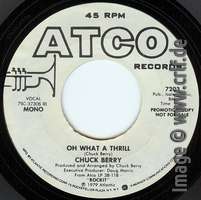
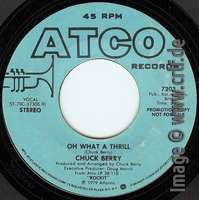
ATCO 7203 promo, mono and stereo side labels
Acknowledgements
Steve Hoffman was of great help during the research of this article both through the public explanations on his forum as well as by answering additional questions in email. Andy McKaie was so nice to check the text for correctness and provided some additional thoughts. Many thanks to both! Next, the author needs to (and really likes to) thank fellow researchers Morten Reff and Thierry Chanu for listening to songs such as “O Rangutang” and “Club Nitty Gritty” dozens of times in hunt for a true stereo version in their huge collections of Chuck Berry records as well as their additional help with variants and images. Finally huge thanks go to fellow researcher Arne Wolfswinkel for his technical expertise in analyzing released versions in search for the original session tape contents.
[addition 31-08-2023]
Within the 2019 text above I explained the ERS technique (“electronically reprocessed for stereo”) used for “Club Nitty Gritty” and many 1960s re-issues of older albums. Using this the original mono recording was modified to sound like a stereo recording even though such never existed.
Beginning in 2020 ERIC Records started to use a more modern technique to create the same. Using computer programs to separate the individual instruments in a mono recording (such as drums, piano or guitar) they digitally created individual tracks for these instruments and remixed those. This technique is known as DES (“digitally extracted stereo”, https://www.ericrecords.com/des_explan-htf17.html). The result is much better than the 1960s ERS variants, but still it's a fake.
There never has been a stereo recording of e.g. Berry's original “Roll Over Beethoven” and there never will be one.
Thursday, October 17. 2019
CBID - a test pressing of MAL-660

CBID is never complete as new records and CDs appear and some old rarities are discovered. This section presents interesting additions and corrections to CBID.
Today: a rarity from the UK
UK
CHUCK BERRYâS GREATEST HITS (Test pressing)
Marble Arch MALS-660 (white label) • January 1967
See page 176 for info.
Now this is the first time we have found a test pressing of any UK albums from the â60s. The label is pure white with Side 1 and Side 2 handwritten on each side. Very few test pressings of albums turn up so this is a rare treat for collectors. We can assume that the other Marble Arch albums might be around as test pressings also. And maybe others too. At least now we know they exists.
This is how the labels of the commercial release look like:
Wednesday, September 25. 2019
CBID - From one of the best versions in years to just noise - the cover versions keep coming

CBID is the Chuck Berry International Directory, a 2.200 page pile of Chuck Berry records information published in four volumes between 2008 and 2013. For details see the bibliography section of this site.
CBID is never complete as new records and CDs appear and some old rarities are discovered. This section presents interesting additions and corrections to CBID.
Today: A huge list of cover versions to be added to the chapter on Chuck Berry covers in Volume 3.
This time I must emphasize the help I have been given from Ari Niskanen in Finland (he was also a great resource with Vol. 3). Several months ago he sent me a bunch of 5 CDs with over 20 Berry covers on each, and many of them I had never heard of before. A big thank you Ari for your enthusiasm and knowledge for Berry covers.
Also I would like to thank BjĂžrn Knudsen of Norway who supplied me the other day with 19 newer Berry covers (2014-2019) I had never heard of. And I have also been searching a little myself, so âŠ
AC-ROCK (USA)
See Volume 3, page 1033 for biographical info.
Rock And Roll Music (2:10) 2012
CD EP: Framed ! [AC-Rock AR-007] • USA, 2012
The album contains 6 tracks.
CHRIS ANDREWS (UK)
Heâs been around since the â60s when âYesterday Manâ was a big hit for him in 1965 and âPretty Belindaâ. He was born in 1942. Heâs been writing songs and recording ever since.
No Particular Place To Go (2:13) 2014
Rock And Roll Music (2:26) 2014
You Never Can Tell (3:22) 2014
CD: Still Rockinâ And Ravinâ [CAP-Sounds ] • Germany, 2014
To be quite honest, these versions are very goode indeed. Solid band and straight ahead arrangements. 15 tracks of good ole rockânâroll music. Berry is the only one who has 3 songs covered, although thereâs a Buddy Holly medley and âPeggy Sueâ.
BILLY BOY ARNOLD (USA)
Blues harmonica player, singer and songwriter from Chicago. Born in 1935. He recorded with Bo Diddley in the â50s. And has released many solo albums throughout the years.
Nadine (3:23) 2014
CD: The Blues Soul of Billy Boy Arnold [Stony Plain SPCD-1378] • USA, 2014
Produced by Duke Robillard and backed by fabulous musicians, plus the Roomful Of Blues horns. However, the presentation is standard.
Itâs kinda interesting to notice all the artists who have taken a new interest to this song during the last 20 years.
BREAKAWAYS (New Zealand)
Beat, R&B, rock quartet from Wellington.
Guitar Boogie (1:55) 1966 (instr)
Iâm Talking About You [as âTalkinâ About Youâ] ( : ) 1966
Little Queenie ( : ) 1966
LP: Letâs Take A Sea Cruise! [His Masters Voice MCLP-6221] • New Zealand, 1966
CD: Letâs Take A Sea Cruise! / Album Two [EMI 7243 8 21714] • Spain, 2009
I have only managed to listen to Guitar Boogie and they have almost followed Berryâs arrangement.
BULLFROG RATA & THE UNDERGATORS w/ Midge Marsden (New Zealand)
According to himself, I do all sorts of things depending on what feels right, with me, and the vibe in the crowd at the time! But blues is definitely the glue that holds the gumbo together. This could mean a driving Texas shuffle, or a sly West Coast swing, maybe a riveting acoustic ballad or a stinging slide solo perhaps.
He started out in the â80s playing street corners, busking in various towns and heâs also played in some of Londonâs most packed bars.
No Money Down (4:41) 2002
CD: All I Need â Live At The Globe [Jayrem no # ] • New Zealand, 2002
Now this is faster than the original, becoming an uptempo R&B number. Very different and unusual.
No Particular Place To Go (2:55) 2002
CD: It Is What It Is [Jayrem CDMULL-14] • New Zealand, 2003
A little bit slower than Berryâs but pretty simple and soulful.
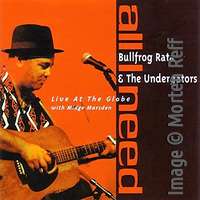
DAVID CARBE Kvartett (Sweden)
Martin David Carbe was born 1993 in KungĂŁlv, Sweden. He started playing piano when he was 15 and studied piano while in college. Heâs played and toured with Robert Wells and in 2016 was a part of his Rhapsody in Rock Summer tour.
Roll Over Beethoven (3:18) 2016
CD: 88 Toner Och 13 Kompositioner [Self released 73 2556 00014 4 5] • Sweden, 2017
CHANG PO CHING (New Zealand)
Heâs a full time working singer, songwriter, guitarist from South Auckland. Heâs become very popular.
Johnny B. Goode (2:03) 2018 (live)
CD single: Universal Music Australia • 2018
The VOICE Australia performance
This probably shouldnât be here, but I couldnât help wondering why an artist/singer would perform this classic for a TV performance in his third entrance in the competition. Interesting isnât it? Maybe because most of the viewers of the Voice are at the age from 30 and down(?)
Anyway, the most peculiar thing is that the stage was arranged just like Berryâs performance in the TAMI Show movie. Check it out on You Tube.
ERIC CHURCH (USA)
One of the popular modern rockinâ country artists. Born in 1977 in Granite Falls, North Carolina. In 2008 he had his first Top Twenty hit and later on he hit #1 several times with songs like âDrink In My Handâ 2011, âGive Me Back My Hometownâ 2014 a.o. Seems like heâs a great Berry fan. Check out âTulaneâ on You Tube.
Nadine (3:22) 2017 (live)
CD: 61 Days In Church Vol. 4 [EMI Nashville EC-61 / 73683 4 2] • USA, 2017
LP: 61 Days In Church Vol. 14 [EMI Nashville EC-61 / 36775 0] • USA, 2017
Tulane (3:06) 2017 (live)
CD: 61 Days In Church Vol. 3 [EMI Nashville EC-61 / 73683 4 2] • USA, 2017
LP: 61 Days In Church Vol. 9 [EMI Nashville EC-61 / ? ] • USA, 2017
âNadineâ recorded live at Scottrade Center, St. Louis, Missouri on 13 May 2017. âTulaneâ recorded live at Vivint Smart Home Arena, Salt Lake City, Utah on 25 March 2017. The 100 songs are from the Holdinâ My Own Tour. I read somewhere that it was a box set of 5 CDs, but when checking Amazon itâs just mp3 downloading. However, on eBay thereâs a lot of LPâs for sale from volume 1 to 15. I feel Eric is a very good performer of these two Berry covers. He has the right drive and voice.
COLWELL BROTHERS (USA)
Guitar brothers. They âadvertiseâ the CD as follows: Old School Soul/Blues/R&B 100% autotuneddrummachinesynthesizerfree stuff.
Beautiful Delilah (3:08) 2012
CD: Guilty Pleasures [Colwell Brothers CBCD-793447357720] • USA, 2012
COUNTRY MUSIC FIVE (USA)
No biographical info.
Promised Land (2:19) 1971
Various CD: Rare 1960s Country Rock From Nashville [SPV 309002] • USA, 2011
This is strange and again I wonder what people (compilers) might be thinking when they say 1960s, as this cover is truly based on the hit version by Freddy Weller which was big on the country charts in the Autumn of 1971.
DUM DUM BOYS (France)
France's number one fuzz rockers. When I saw this I thought, hey, has one of the most popular bands in Norway recorded a Berry song, but I was wrong. This is a French band whoâs released some 12 albums so far.
Havana Moon (2:52) 2019
LP: Play All Your Favourite Songs [Mono Tone Records MT 030LP] • France, 2019
HOWARD EMERSON (USA)
Born 1951 in Boston, MA. It says that his musical DNA was permanently disarranged upon hearing Chuck Berryâs âMaybelleneâ when he was 4 years old (my oh my, that was early!). However, he learned playing guitar by listening to a dozen albums by The Ventures. He became a very accomplished master on the guitar, electric slide and fingerpickinâ. Since 1998 heâs released 4 albums with mostly self penned original songs.
Maybellene (3:33) 2004
CD: A Tale To Tell [Orchard 804986] • USA, 2004
As Howard says himself: The CD represents all the musical influences that have affected me since childhood. Then itâs interesting to notice that he performs only original songs except the Berry one.
NATHAN FOLEY (Australia)
Singer and musician born in 1979. For ten years he was a member of the Australian childrenâs entertainment group Hi-5.
Heâs been part of several musicals and has won several awards both as a solo performer and with Hi-5. Heâs released several albums, containing mostly covers.
Roll Over Beethoven (2:45) 2018
CD: At This Moment [self released 01 9192 49250 6 4] • Australia, 2018
This is a cross between Berry and Beatles with a more nod to Berry. I think this is just available digital.
GHOSTS OF NOTHING (Australia/UK)
They are actually Sean Lowry and Ilmar Taimre with artistic collaborators including Lee Devaney, Charles Famous, Coleman Grehan, Lyndall Johnston, Laura Purcell, Frank J. Miles and more. See below for more info.
Johnny B. Goode (5:07) 2014
CD: In Memory of Johnny B. Goode - A Rock Opera [Ghosts of Nothing 940499] • Australia/UK, 2014
This is not even peculiar, this is weird. There are absolutely no guitar riffs or melody and if you listen carefully youâll hear the lyrics. Itâs not easy to explain what this is all about, however, itâs a play in 3 acts containing 13 songs altogether. You can visit www.ghostsofnothing.com and see and read for yourself. Also visit You Tube and listen to Johnny B. The CD cover is a fold-out with lots of old fashioned pictures. 5 of the songs are covers a.o. Rock Around The Clock, and Mercedes Benz (Janis Joplin), the rest are composed and arranged by Sean Lowry and Ilmar Taimre. Very strange concept indeed.
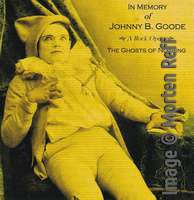
IAN GILLAN & THE JAVELINS (UK)
See Volume 3, page 1268 under Javelins for biographical info.
Memphis, Tennessee ( : ) 2018
Rock And Roll Music ( : ) 2018
CD: Ian Gillan & The Javelins [Ear Music 0211877 EMU] • Germany, 2018
LP: Ian Gillan & The Javelins [Ear Music 0213164 EMU] • Germany, 2018
Ian is reuniting with original band members from the early â60s to play the songs they did back then. 15 tracks from the likes of Howlinâ Wolf, Bo Diddley, Sam Cooke, the Drifters, the Coasters, Buddy Holly, Ray Charles, Jerry Lee Lewis, the Everly Brothers, Roy Orbison and the Contours.
RON HACKER And The Hacksaws (USA)
Blues-rock singer, guitarist born 1945 in Indianapolis, Indiana. He released his first album back in 1988, titled âNo Very Musicâ.
Almost Grown (5:57) 1990 (live)
CD: Barstool Blues [Hacksaw HRH-1990] • USA, 1990
Recorded live at the Saloon North Beach, San Francisco
Almost Grown (3:01) 2003
CD: Burninâ [Hacksaw HR-6415] • USA, 2003
âAlmost Grownâ on a blues record? Well folks, it works! Really. What a groove.
Nadine (3:28) 2015
CD: Goinâ Down Howlinâ [Hacksaw WTB-1003] • USA, 2015
Slower and more bluesy.
STEVE HACKETT (UK)
Real name Stephen Richard Hackett. Born 1950 in Pimlico, London. Heâs regarded as a first class guitar player and is well known for his prominent work with Genesis. He did 8 albums with the group before he would concentrate on a solo career.
Guitar Boogie (2:12) 1982 (instr)
CD: Highly Strung [Virgin 00946 377318] • UK, 2007
Too fast and too noisy. Loses the beauty of the melody⊠This album was a reissue of the original from 1983 with 3 bonus tracks including the Berry cover.
WARD HAYDEN And The Outliers (USA)
Country rock quartet from Boston, Massachusetts, formerly known as Girls, Guns and Glory.
Promised Land (2:34) 2018
CD: Canât Judge A Book [ unknown ] • USA, 2019
Now folks, this is a really raw, rockinâ country version with great guitar work (by Cody Nilsen). One of the best versions Iâve heard in years. Check them out on You Tube.
RICHARD HENDERSON (Canada)
Country-blues player on acoustic lap steel which is a pretty rare solo instrument. The CD below contains 15 tracks and he has help from other people on several but itâs only Henderson and his lap steel featured on the two Berry covers. He has some original songs but mostly it is covers of blues standards. Again it is interesting to notice the inclusion of Berryâs music. As it says in the album notes: Chuck Berryâs âNadineâ and âYou Canât Catch Meâ are not really blues standards I guess but they certainly do get re-interpreted on solo lap steel.
Nadine (2:33) 2010
You Canât Catch Me (3:44) 2010
CD: Seventh Day: Acoustic Lap Steel Guitar [Richard Henderson 775020996328] • Canada, 2010
HETTY & VIBES (Australia)
No biographical info.
Johnny B. Goode (4:40) 2012
CD: Hetty & Vibes [Belmar Records mp3 ] • Australia, 2012
Johnny B. Goode the slow way⊠I know, itâs mp3 and I usually donât include mp3âs, but I wanna make an exception as I think this is quite unusual and goode.
JACKYS (Switzerland)
A quartet led by pianist and singer Jacky, real name Ueli Schmutz, born in 1945 in Bern. The band has released 11 albums since 1976, and Jacky himself has released a few. Jacky is known as MR. Swiss RockânâRoll.
Strange I have never heard of them before??? Remember I have been searching for Berry covers on the net since the early â90s.
Sweet Little Sixteen ( : ) 1976
LP: Jackyâs Boogie [EMI 3E 054 33865] • Switzerland, 1976
11 country and rockânâroll covers plus two originals.
Memphis, Tennessee (3:46) 1980
Sweet Little Sixteen (2:43) 1980
LP: My Little World [EMI 13C 058 76103] • Switzerland, 1980
Rockânâroll and country covers.
Roll Over Beethoven (3:36) 1988
You Never Can Tell (3:00) 1988
CD: Hello Rock And Roll [Phonacord CDPA-82007] • Switzerland, 1988
Rockânâroll and country covers and originals.
Little Queenie ( : ) 2015
Promised Land ( : ) 2015
CD: 50 Years [Sound Service JACKCD-11] • Switzerland, 2015
10 rockânâroll covers and one by Kris Kristofferson.
MARVIN JENKINS (USA)
American jazz pianist and composer. Has played with many of the jazz greats and was a member of the Barney Kessel Quartet. Born 1932 in Aultman, Ohio, died 2005 in Pasadena, California.
Memphis, Tennessee (2:37) 1965
LP: Big City [Palomar G-24001 (mono) /GS-34001 (stereo)] • USA, 1965
Nice to have another jazz man recording a Berry number. We are still looking for Stan Kentonâs cutting Maybellene(?)
Although this is not an instrumental as expected but a vocal one that sounds like a cross between pop/jazz and soul. Quite unusual.
EVAN JOHNS (USA)
Johns was born 1956 in McLean, Virginia, but started his musical career as a songwriter and guitarist in Washington D.C. In the â70s he played with Danny Gatton and later started his own band The H-Bombs. He died in 2017.
No Money Down (2:50) 2016
Rock And Roll Music (3:51) 2016
CD: Does The Great American Songbook Vol. 1 [Jelly Roll Record ] • USA, 2016
12 tracks from the pens of Pete Seeger, Woody Guthrie, Carl Perkins, Merle Haggard and more. Again Berry is the only one with two songs !!! Produced by Evan Johns and recorded at Teenie Weenie Sound Studios in Vancouver, Canada.
J J JOHNSON (USA)
James Louis Johnson, jazz trombone player and songwriter, born 1924 in Indianapolis, Indiana and died in 2001. According to Wikipedia he played jazz, bebop, hard bop and third stream (!)
No Particular Place To Go (2:13) 1965
LP: Goodies [RCA Victor LSP-3458] • USA, 1966
He must have been one of the very first to cover this Berry tune, and in the jazz field(!) Again I am amazed how many different styles and artists/musicians who covers Berry.
LORANES (Germany)
Garage rock, neo-blues, psychedelic trio who came on the scene in 2015 with their debut single and album âTrustâ.
Johnny B. Goode (4:12) 2018 (live)
LP: Live At Acoustic Lakeside Festival 2018 [H42 Records H42-059] • Germany, 2019
According to Discogs this was a one sided limited vinyl release with 250 copies pressed, 125 on black vinyl and 125 on clear-red vinyl. It also seems it was released as a full 11 track album. Sorry to say but to me this is just noise.
LORENZO MENZERSCHMIDT (USA)
Just so you know, this is a three piece blues band, consisting of âLost Jimâ Ohlschmidt (lead vocals, guitars), Tony Menzer (bass, vocals) and Victor de Lorenzo (drums, vocals). Kinda interesting invention of a band name.
Johnny B. Goode (4:19) 2012
CD: Lorenzo Menzerschmidt [Lorenzo Menzerschmidt 884501814195] • USA, 2012
A minor swing version of this classic. Very unusual. As they say at CD Baby: What do Sleepy John Estes, Mississippi John Hurt, Chuck Berry, and Blind Blake have in common? - They're all covered by this adventurous roots trio with an original song list shaped by old-school blues and rock 'n' roll.
TRADE MARTIN (USA)
Born in 1943, Union City, New Jersey. Musician, songwriter, producer. He worked with Johnny Powers in the late â50s, recording as Johnny & The Jokers. He later on recorded for Roulette a.o. and released an album on Buddah in 1972. But it is as a composer and producer heâs best known throughout the â60s and â70s especially. In 1990 he was also involved in B. B. Kingâs Grammy Award winning CD âLive At San Quentinâ.
School Day (2:45) 2005
CD: Then - Songs Of Our Youth [Innovation Digital ] • USA, 2005
Heâs followed Berryâs arrangement to the point, even the guitar is in the same key.
SWEET MIKEY C (USA)
Real name Mike Campbell. Family moved from Phoenix, Arizona to Odessa, Texas in 1956 when he was about 9 years old. He remember seing Roy Orbison on TV and later got hooked on the guitar playing by Scotty Moore. So there you have his roots.
Nadine (4:18) 2012
CD: Scooby Daddy [Mikey C Music 1951089] • USA, 2012
Featuring Bobby Keys and Johnny Hiland. This was his second CD where he is in a little Roy Orbison mood by covering 3 early songs by him. Recorded, mixed, and mastered at Java Jive Studios in Nashville, TN. Mikeyâs first album came out in 2009 titled âRock ânâ Roll Time Capsuleâ, a 2-CD set, where he a.o. covered 4 Buddy Holly songs, and a lot of other rockânâroll classics.
MOODY BROTHERS (USA)
Country music trio , Carlton Moody, Dave Moody, and Trent Moody who started out in the early parts of the â80s. Got nominated for a Grammy for their recording of the classic âCotton Eyed Joeâ in 1985. In 1988 they recorded an album in Prague, Czechoslovakia with Jiri Brabec and Country Beat. The album Friends was the first such cooperative production between an American company, Lamon Records and what was then a communist state-owned record label Supraphon.
Later on the Moodys have focused on individual careers while still performing together occasionally.
Johnny B. Goode (2:37) 2012 (live)
CD: Live From Billy Bobâs Disneyland Paris [Lamon Records ] • USA, 2012
MARIUS âBUTCHâ NORDAL (USA)
Jazz pianist, jazz journalist and educator. He was born in New Orleans but family moved to Seattle when he was seven. After several years of piano lessons he became an accomplished boogie woogie and blues player with a little rock and roll thrown in for good measure.
School Day (3:35) 2009 (instr)
CD: Boomer Jazz [Origin Records â82545] • USA, 2009
Nice to see even another jazz musician playing Berry. Of his background he has this to say: During my high school years,I grew up during the last few years of an eclectic, bluesy era where Miles Davis, Count Basie, Fats Domino, Chuck Berry and Bill Doggett co-existed with Doris Day, Pat Boone, Perry Como and Frank Sinatra. You could even hear any of them on a single radio station!
CLAIRE PETRIE (USA)
Country singer who grew up in a large musical family in Saratoga Springs, New York. "You Never Can Tell" was her debut single from the album and also with a following video.
You Never Can Tell (3:32) 2015
CD: The One [Playback Records ] • USA, 2015
She does a very decent cajun version of this Berry classic, good voice and arrangement, check out the video (pretty nice) on You Tube.
People, think of all the great videos you can actually do to a Chuck Berry tune. The story lines are so great they could have all been small and short movies.
QUIREBOYS (UK)
Heavy hard rock band from London, formed in 1985 disbanded in 1993. They got together again in 2000. They released 5 albums from 1990-1994 and some 16 albums from 2000-2019. Man they have been productive.
Little Queenie (4:24) 2017
CD: White Trash Blues [Off Yer Rocka Recordings OYR-044] • UK, 2017
On an album from 2014 they do a song titled You Never Can Tell which is not the Berry classic, although they repeat several times It goes to show⊠So they learned something.
RATS (UK)
See The Treacle below
RONA (Israel)
No biographical info.
Johnny B. Goode (3:06) 2015
CD: Goose Chase [ ? ] • Israel, 2015
Synthesizer ⊠very slow interpretation and the guitar has been sampled several times during the 3 minutes playing time, the same opening riff over and over again while Rona sings very sensual. Donât know if thereâs an actual CD release here. I can only find two songs with her from 2015. And thereâs even a couple of videos on You Tube of her singing Johnny B.
You probably need to download the songs, in case.
JIM RORIE (USA)
Country singer, songwriter It says that he plays Mississippi country blues, but I feel he sounds much more country than blues.
Memphis, Tennessee (4:18) 2012 in medley with âMr. Crumbâ (1:31)
CD: My Home Is Memphis, Tennessee [Jiro Records 887516161537] •
Unfortunately he follows the Johnny Rivers arrangement almost note for note. All songs on the album are about Memphis, the home of Rock and Roll and the home of the Blues. Songs by W. C. Handy, Hoagy Charmichael, Berry, Tommy Tucker and Curley Williams, plus six new songs written by Rorie.
WOLFGANG SCHMID (Germany)
Fusion, Jazz-Funk, Jazz-Rock quintet.
Johnny B. Goode (5:07) 2004
CD: A Swift Kick [Skip Records SKP-9053 2] • Germany, 2005
Recorded live at Dreamscape studios, Munich, 2004.
SHAKERS (Canada)
Now hereâs another Shakers group, this time from Canada. A rock quartet who was active from 1979-1982. They had two albums out, 1981 - 1983. Rick Andrew played bass. Hail! Hail! boys for pickinâ an obscure Berry song. In 1980 nobody else had ever thought of covering "My Mustang Ford". Strange actually because itâs a good rocker, again a car song with excellent lyrics.
My Mustang Ford (3:02) 1980
12â EP: Rock And Roll [Warpt Records WRC1-1515] • Canada, 1980
CD:The Shakers [Warpt Records # 909] • Canada, 2000
No Money Down ( : ) 1980
12â EP: Rock And Roll [Warpt Records WRC1-1515] • Canada, 1980
SHOVELS & ROPE (USA)
A country/folk duo from Charleston, South Carolina. They are husband Michael Trent and wife Cary Ann Hearst.
You Never Can Tell (2:19) 2017
CD: Busted Jukebox Vol. 2 [New West Records NW-6415AD ] • USA, 2017
Strange version, it starts with a Johnny B. guitar riff and then runs way too fast. Also with a weird sound.
BJĂRN SPELLMANN (Norway)
Accordionist. Real name BjĂžrn Brenne. Playing pop and country oriented music. He also had an album out in 2001 âTrekkspill I 2001â.
Memphis, Tennessee (2:40) 2004 (instr)
CD: Trekkspill I 2004 [Busk Records BCD-245] • Norway, 2004
Not bad and it swings, but heâs followed the Johnny Rivers arrangement (as so many others) and it becomes sort of predictable.
JOHN THIBODEAU (Canada)
John and the boys play a kind of accoustic blues and folk music. John Thibodeau (guitar, vocals), Barry Brown (guitar), Chris Turner (harmonica) and Mark Thibodeau (piano).
Maybellene (3:48) 2009
CD: Passinâ through [Ruination Records 700261266374] • Canada, 2009
A slower more bluesy version.
TREACLE (UK)
Featuring guitarist Mick Ronson and Benny Marshall and Keith Cheesman. It seems like the connection between the Rats and the Treacle were actually Mick Ronson. The Rats had three singles out in 1964-65. Donât know if Treacle released any records but three songs by them are on both the CDs mentioned below.
Guitar Boogie (4:28) 1969 (instr) prev. unissued
CD: The Rise And Fall Of Bernie Gripplestone And The Rats From Hull [Tenth Planet TP-012] • UK, 1995
CD: The Fall And Rise â A Rats Tale [Angel Air Records SJPCD-165] • UK, 2004
This is not the worst I have heard but it comes pretty close. Okay, so they got he idea from Jeff Beck, but⊠Harmonica doesnât fit the song guys, and the so-called short drum solos sounds like a joke. I am almost sure this was not supposed to be issued, and it should have stayed in the can. The overall sound is rotten too.
TRIPWIRES (USA)
Rock and roll group from Seattle, Washington featuring John Ramberg on vocals and lead guitar.
Tulane (2:39) 2007
CD: Makes You Loook Around [Paisley Pop 678277145924] • USA, 2007
Not quite sure what to make of this heavy version. Itâs like a total mess The vocals are not following the music. It sounds like they were living in two different worlds.
JOHN VERITY BAND (UK)
Blues-rock band. Guitarist John Verity was born in 1949 in Bradford, West Yorkshire. Heâs been in bands like Argent and Phoenix. Has released some 20 albums, the latest being âBlue To My Soulâ in 2017.
Johnny B. Goode (5:16) 2015
CD: Live At Bosky [VaVoom Records 478897] • UK, 2015
They also do a version of âRoute 66â the Berry/Stones way. Recorded live in one day at Bosky Studios in the village of Ireland in Bedfordshire. Live?
JOHN C. WAKELY (USA)
Son of country & western singer/songwriter Jimmy Wakely. The man who wrote a.o. âToo Lateâ which Berry recorded in 1974.
I have tried to find out when this album below was recorded but with no luck. It was produced by his dad Jimmy (who died in 1982). I did find an album by John Wakely released on Decca 75139 in 1969, titled âPlease Donât Hurt Me Anymoreâ, but âMemphisâ is not on it.
Memphis, Tennessee (2:48) late â60s or early â70s
CD: Country Son Of A Western Singer [Essential Media Mod 5191076] • USA, 2012
Saturday, July 27. 2019
CBID - Further entries to the Berry discographies for UK, NL, Spain and more

CBID is never complete as new records and CDs appear and some old rarities are discovered. This section presents interesting additions and corrections to CBID.
Today: still we discover releases which were missing from the book, including some from well-documented countries.
UK
CHUCK BERRYâS GREATEST HITS
Marble Arch MALS-660 • January 1967
See page 176 for info.
Same tracks as the mono LP but in electronic stereo. STEREO MALS is stamped in red letters on the back cover. Â You will find the labels with the printing Stereophonic or without. Both have MALS 660 printed on the labels.
NETHERLANDS
Nadine / Come On
Funckler AR 45.111 • 1964 (picture sleeve, Chuck Berry Song Series #6)
Here we have three different variants. The Chuck Berry Song Series was a series of 45s going way up to #17. This one pictured had an orange Funckler label with some variations in printing. However, you might find it with a black label although I have never seen one. The other two images show two different (earlier) releases having colour tops, blue and purple. One with orange and one with black Funckler label, the latter being the first issue. Although we have no info what came first, the hen or the egg.
There is also a third label variant from Holland, Chess International orange label. Although I have never seen ARI 45.111 like that. Hopefully to give you a better explanation regarding all of this, please see page 400 under ARI 45.082 Roll Over Beethoven / Sweet Little Sixteen.
NEW ZEALAND
ST. LOUIS TO LIVERPOOL
Viking [Chess] LP-1488 • 1964
This is the mono variant. Donât know if the stereo one was released.
PHILIPPINES
You Never Can Tell / Brenda Lee
Chess ARI-1013 • 1964
Multicolor label. The sound here is pretty poor. According to Thierry Chanu it seems like master (the tape machine) might have fluctuated.
SPAIN
ROCKINâ AT THE HOPS
Zafiro [Serdisco] 301 12367 • 1989
Same as the UK reissue Charly (Green Line) LP GCH-8041 (1986).
NEW JUKE BOX HITS
Zafiro [Serdisco] 301 12364 • 1989
Same as the UK reissue Charly (Green Line) LP GCH-8008 (1986).
BERRY IS ON TOP
Zafiro [Serdisco] 301 12369 • 1989
Same as the UK reissue Charly (Green Line) LP GCH-8043 (1986).
The above three albums have printed 1988 on the back cover, but the labels says 1989.
TAIWAN
CHUCK BERRYâS GOLDEN DECADE VOL. 2 [2-LP]
Giant TD-1215 16 • 1973
Same as US LP 2CH-60023, but it seems as this was a single LP cover, no fold-out. And the back cover is in black & white, no colours.
Tuesday, July 23. 2019
CBID - more by Johnnie Johnson and Keith Richards

CBID is never complete as new records and CDs appear and some old rarities are discovered. This section presents interesting additions and corrections to CBID.
Today: An addition to chapter 18 in Volume 2. This chapter covers the session work and records by Chuck Berry's main musical partner Johnnie Johnson, recorded in addition to his work with Berry.
SESSION WORK and GUEST APPEARANCES
Keith Richards
TALK IS CHEAP (30th Anniversary De-luxe edition)
2-CD: BMG 4050538466980 • USA, 2019
Big Town Playboy (4:19)(See page 876.) A remastered edition of the 1988 original album, released 29 March 2019. CD one has the original album and CD two has 6 tracks all previously unissued. The track above featuring Johnnie Johnson is previously unissued. Itâs a midtempo bluesy tune with Johnnie in good form and Keith throwing in some Berry riffs at the end. Also available on 180gr. vinyl as a 2 album set.
Friday, July 5. 2019
The fifty-five Chuck Berry recordings missing from the Bear Family 16-CD set
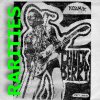
Probably, this privately-made collection has been made available on one of the typical bootleg sites. For some time, privately-made CD copies of this collection were sold by an American bootlegger on ebay using the album name âSuch A Sight To See â Vol. 1â. There are other Volumes containing all kinds of live performances. The bootleg CDs have a printing âMade in Japanâ and a barcode (all the same), which are intended to make them look âofficialâ.
We do not encourage to buy bootlegs as we believe that music creators (artists, musicians, studios, labels) deserve a fair compensation for creating the work we all enjoy. However, we would like to encourage Bear Family and similar re-issue labels to take this collection as a pattern of what urgently needs to be re-released soon.
On the first two CDs of this collection, the creator included 55 (53) studio recordings by Chuck Berry. All follow a simple rule: they have been released in the past before but were omitted from the omnibus Rock And Roll Music - Any Old Way You Choose It (Bear Family BCD 17273 PL, 2014). Which tells us that if Bear Family would have included just two more CDs in their 16-CD boxset, theyâd had indeed made the âultimateâ Berry collection.
Many of the tracks are from the out-of-print HIP-O-Select boxsets, some are from other CDs and records and were missing even on these âcompleteâ sets. All have been discussed on this site before. One should note, though, that some of these tracks are omitted from the Bear Family set by intention e.g. because of the poor sound quality (Go Go Go, Top Gear tracks). Anyway, they are âout thereâ and thus missing.
The collectorâs effort in combining the missing recordings is worth to be repeated here for all of you who would like to know what they missed when buying the Bear Family box. Thus here it is (with a few corrections from me):
1. La Jaunda (EP Version) â We prefer the spelling La Juanda because this is what Chuck sings.
2. Rock and Roll Music (Alternate Take)
3. Sweet Little Sixteen (Original Demo â Longer Ending) â nowadays considered to be Take 1.
4. Sweet Little Sixteen (Take 3 )
5. Sweet Little Sixteen (Take 8 ) â which in fact is a combination of Take 11 and Take 13.
6. Sweet Little Sixteen (Take 11 )
7. Sweet Little Sixteen (Master â Original Speed)
8. Night Be At (Take 3 ) â correct title is Night Beat, of course.
9. Time Was (Take 4 )
10. Reelinâ And Rockinâ (Take 1 )
11. Reelinâ And Rockinâ (Take 7 )
12. Reelinâ And Rockinâ (Take 8 )
13. Johnny B. Goode (Take 1 )
14. Johnny B. Goode (Take 2 )
15. Johnny B. Goode (Take 3 )
16. Around And Around (Overdub â Take 2 )
17. Around And Around (Overdub â Take 3 )
18. Ingo (Overdub â Take 3 )
19. Beautiful Delilah (Takes 15 & 16 )
20. 21 (Take 14 )
21. Carol (Alternate Piano Overdub 1 )
22. Carol (Alternate Piano Overdub 2 )
23. Anthony Boy (Take 6 )
24. Sweet Little Rock âNâ Roller (Take 5 )
25. Merry Christmas Baby (Album Version)
26. Little Queenie (Take 8 )
27. Do You Love Me (Alternate Take)
28. Almost Grown (Take 14 )
29. Almost Grown (Take 28 )
30. Blue on Blue (Take 3 )
31. Betty Jean (Take 14 )
32. Betty Jean (Take 17 )
33. Childhood Sweetheart (Alternate Take)
34. I Just Want to Make Love to You (Take 3 )
35. Broken Arrow (Take 21 )
36. Let It Rock (Alternate Mix)
37. Too Pooped To Pop (Take 4A )
38. Go Go Go (Alternate Take)
39. Nadine (Stereo Remix)
(40.) The Little Girl From Central (Stereo) â the stereo version IS in the Bear Family box, though.
41. O Rangutang (No Fade)
(42.) Big Ben Blues (Stereo) â likewise also this stereo version is not missing in Bear Familyâs set.
43. Promised Land (Stereo Remix)
44. No Particular Place To Go (Stereo Remix)
45. Little Marie (Stereo Remix)
46. I Want To Be Your Driver (Stereo Remix)
47. Nadine (BBC Top Gear) â these three are from BBC Radio 1965
48. Promised Land (BBC Top Gear)
49. No Particular Place To Go (BBC Top Gear)
50. Oh Captain (Original Unsynched)
51. YMCA Radio Spot
âââ missing here is the NAPRA Radio Spot of 1975
52. Ridinâ Along In My GTI
53. Go Shabba Go (With Shabba Ranks)
54. Independence Air Commercial
55. Independence Air Safety Briefings
Congratulations to the collector for this next-to-complete list. Along with the Bear Family set this combines every surviving studio recording ever made by Chuck Berry (except for the late Dualtone release and a couple of TV and radio studio recordings).
Thus a request to Bear Family and the other labels: This is what collectors would like to be able to buy legally!
Thursday, July 4. 2019
CBID - Some new tributes to Chuck Berry

CBID is never complete as new records and CDs appear and some old rarities are discovered. This section presents interesting additions and corrections to CBID.
Today: three additions to chapter 14 in Volume 2 which covers tributes to Chuck Berry.
Ă
GE ALEXANDERSEN (Norway)
See Volume 3, page 1036 for biographical info, and also Volume 4, page 1763.
GĂ„ GĂ„ GĂ„ (3:52) (Chuck Berry-ge Alexandersen) 2018
CD: So far this is only available on line. He performed it live during his 70 years birthday party (where he spoke highly of Berry) which was filmed for TV.
This is Ă geâs tribute to one of his mentors, Chuck Berry. He says he once did get some Berry singles with Johnny B. Goode and Sweet Little Sixteen and he knew what he was going to do. He says that there wouldnât be any rockânâroll as we know it without Chuck Berry. He uses a great deal of the text from Sweet Little Sixteen and then writes his own lyrics to fit in. Itâs actually a rock song but itâs not rockinâ, if you get my drift. Anyway, itâs a good tribute.
LA MANZANA PLASTICA (Mexico)
1960s rock/beat band who is still out there playing âpure rock of the â60sâ as they call it.
Berry Rides Again (as âEl Gran Chuck Berryâ) (2:20) 1970
45: CBS 6644 • Mexico, 1970
Sung in Spanish. Taken from The Steppenwolfâs tribute to Berry from 1968 (see Steppenwolf on pages 761 and 1895).
GUNN-TRUSCINSKI DUO (USA)
Steve Gunn (guitars), John Truscinski (synths, drums). According to something Iâve read they play a mixture of folk, rock and experimental music. And if you listen to the tribute below it sounds something like that.
Seagull For Chuck Berry (5:02) (Gunn-Truscinski) 2017 (instr)
LP: Bay Head [Three Lobed LPTLR-124] • USA, 2017
Recorded at Echo Canyon West (?) in March 2017. Not so much Berry pickinâ on this slow and unusual instrumental. You can hear traces from âDeep Feelingâ, but Gunn explains that we sometimes took direct inspiration from the late rockânâroll godfather. However, you will have to listen closely. Anyway, because of the title itâs a tribute all right. The album above was their third as a duo.
Wednesday, July 3. 2019
CBID - Newly discovered Berry covers - and two non-covers

CBID is never complete as new records and CDs appear and some old rarities are discovered. This section presents interesting additions and corrections to CBID.
Today: Yet another list of cover versions to be added to the chapter on Chuck Berry covers in Volume 3 and two songs which made it there by mistake:
Hereâs another cover that must be moved to the NO Chuck section:
The Mike Cotton Sound (UK): Around And Around (1964) (live) (page 1142) Written by Mike Cotton.
This was one of the early covers I spotted way back in the late â60s and unfortunately didnât re-check when I was working with Vol.3. But now we know.
Also the group Big Country (UK) â page 1073 must be erased as their version of âPromised Landâ from 1989 was written by Stuart Adamson and NOT Berry.
However, cover versions of Berry song keep coming. And some of these are quite goode, indeed. Here's the latest list of new and newly discovered Berry covers.
GEORGE BENSON (USA)
Singer, songwriter and guitar player from Pittsburgh, Pennsylvania, where he was born in 1943. Alternating between jazz, pop, R&B , and scat singing. In the â60s and â70s he was known for his funky instrumental jazz, and in the â80s and â90s for his more smooth R&B crooning. His first album âThe New Boss Guitar Of George Bensonâ came out in 1964. He recorded a tribute album to Nat King Cole in 2013.
As a guitar player he was heavily influenced by jazz guitarist Wes Montgomery. In 1976 his album âBreezinââ hit the #1 spot on the Billboard album chart and was certified triple-platinum. He has also received several Grammy Awards throughout his career.
Havana Moon (4:54) 2019
How Youâve Changed (3:21) 2019
Memphis, Tennessee (3:19) 2019
Nadine (3:53) 2019
You Canât Catch Me (3:35) 2019
CD: Walking To New Orleans [Provogue PRD 819873018650] • USA, 2019
CD: Walking To New Orleans [Provogue PRD-75812] • Netherlands, 2019
LP: Walking To New Orleans [Provogue PRD-75811] • Netherlands, 2019
The subheading is Remembering Chuck Berry and Fats Domino. The LP is available in both black and yellow vinyl. âNadineâ turns out to be the best Berry cover on the album. Of course itâs interesting that a guy like Benson turns to Berryâs and Dominoâs music to make an album. Although I would have wished for a more original approach. I have been listening to the album several times and it becomes a little predictable, thereâs no surprises. Although I must admit that âHow Youâve Changedâ was an interesting and good choice which has become more of a ballad thing. Come to think of it, isnât the song actually a ballad?
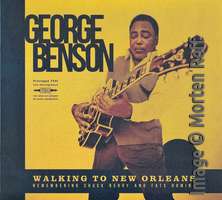
WILD BOB BURGOS And His Houserockers (UK)
See Volume 4, page 1779 for biographical info.
Itâs My Own Business ( : ) 2018
CD: Yeah!!...Dedicated To Rockinâ!! [TCY Records TCY-033] • Switzerland, 2019
Recorded in December 2017. âDedicated to the memory of the late great Chuck Berryâ.
Heâs done several soundalikes and tributes, but itâs goode to finally have him in the Cover series. The album contains 14 tracks, all written by Burgos except the Berry tune.
SANDY FORD & FLYING SAUCERS (UK)
See Volume 3, page 1197 for biographical info on The Flying Saucers.
Maybellene ( : ) 2018
CD: Out Of The Blue [Raw 1041] • UK, 2018
Self published album, containing 27 tracks, mostly covers of well-known rockânâroll songs, and some originals. Produced by Sandy Ford and he also plays most of the instruments himself. Sandyâs voice is remarkable reminiscent of Gene Vincentâs.
JERRY GARCIA BAND (USA)
See Volume 3, page 1207 for biographical info.
Let It Rock (6:37) 1987 (live)
You Never Can Tell (Câest La Vie) (7:08) 1991 (live)
6-CD box: Electric On The Eel [ATO Records JGFRR-1021] • USA, 2019
Both songs recorded live at French's Camp On The Eel River in Piercy, California on 29 August 1987 respectively on 10 August 1991.
HET COCKTAIL TRIO (Netherlands)
No biographical info.
No Particular Place To Go [as âDe Hele Wereld Alleen Van Onsâ] ( : ) 1964
45: Imperial IH-608 • Netherlands, 1964 (PS)
JP AND THE RAZORS (UK)
A three-piece rhythm and blues/rockânâroll outfit from the North-West of England. Guitar, bass and drums.
It Wasnât Me (3:50) 2018
CD: Nothinâ To Lose [JPRCD-18011] • UK, 2018
Again it goes to show, all material is original apart from the Berry number!
LOS DRACS (Spain)
Beat sextet.
Johnny B. Goode [as âVen Johnny Venâ] (2:24) 1965
Rock And Roll Music (1:57) 1965
EP: Los Dracs [Alma 4010-XC] • Spain, 1965
Johnny B. follows the others from Spain or Mexico. Rock And Roll Music built around the Beatlesâ version, plain and straight forward.
SEAMUS McGARVEY BAND (UK)
At the age of 72, Seamus McGarvey comes out with his debut album! A family band from Southend On Sea consisting of Seamus McGavey on rhythm guitar and lead vocals, John McGarvey on harmonica, Pat McGarvey bass, 5-string banjo and backing vocals, plus Jed Potts on rhythm and lead guitars, Calum McIntyre drums and washboard.
Roll Over Beethoven (3:10) 2018
CD: Seamus OâBoogie [Johnny Rock Records JOROCK-028] • UK, 2019
A rockinâ goode version with a solid beat, one of the best Iâve heard in a long while. Recorded in Edinburgh during two days in March 2018.
LITTLE HERBIE MAYES & The Twisters (USA)
No biographical info.
Maybellene (1:51) 1962
45: Alley AS-1064 • USA, 1962
Fast rockabilly version with a good bass line.
DUKE ROBILLARD BAND (USA)
See volume 3, page 1460 for biographical info.
Dear Dad (2:13) 2019
CD: Ear Worms [Stony Plain SPCD-1403] • USA, 2019
This is a rockin goode version for sure. Duke has gathered a lot of friends to participate on this album and it is Klem Klimek who sings on this track but Duke is playing guitar, at least. The album was conceived as an album of songs that he heard and was attracted to growing up. Duke had this to say about pickinâ âDear Dadâ: It is one of my favorite Chuck Berry tunes. A latter song of his and never a hit, but it possesses all the components of a great Berry composition. Chuckâs command of the English language and his ability to create the coolest slang ever written is uncanny â Coolerator?!!! Whatâs cooler than that?
The CD contains 13 tracks and the opening and self penned âDonât Bother Trying To Steal Her Loveâ is a cool one too, rocking like a Chuck Berry tune and sounding very close to âYou Never Can Tellâ in the verses.
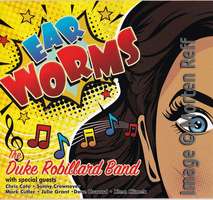
TOMMY ROE (USA)
See volume 3, pages 1472-73 for biographical info.
It has come to my knowledge that it is actually guitar wizard Reggie Young who plays the eminent guitar fills and solos on Tommy Roeâs version of âCarolâ from 1964. The guitar playing blew my mind the first time I heard it. I was sure there must have been someone special, but now it is out that it actually was Reggie Young, a studio musician whoâs played on 100s of country, rock and pop songs (and hits) since the late â50s. Unfortunately he died 17 January 2019 at the age of 82.
Additional info for us all, it is also Reggie who played solo guitar on the Bill Blackâs Combo album âPlays Tunes By Chuck Berryâ [Hi SHL-32017] from 1964.
LINDA RONSTADT (USA)
See volume 3, pages 1478-79 for biographical info.
Back In The USA (2:58) 1980
CD & LP: Live In Hollywood [Rhino 574477] • USA, 2019
Recorded 24 April 1980 for her HBO television special at Television Center Studios in Hollywood. She was joined on stage by a band featuring Kenny Edwards (guitar), Danny Kortchmar (guitar), Billy Payne (keyboards), Dan Dugmore (pedal steel), Bob Glaub (bass), Russ Kunkel (drums), plus backing vocalists Wendy Waldman and Peter Asher, the latter besides being the executive producer also plays percussion. The Berry cover sounds very much like the hit version from 1978, very solid. The album contains 12 tracks, and except for two of them the rest are previously unreleased, including the Berry number.
ARLEN ROTH (USA)
See volume 3, pages 1481 for biographical info.
Promised Land (5:21) 2019 feat. Jerry Donahue
CD: Tele-Masters [Aquinnah AQ-0414] • USA, 2019
A whole album of players who are known for their Fender Telecaster skills. 16 tracks and besides featuring Arlen Roth (of course) youâll hear in the country field people like Vince Gill, Steve Wariner, Brad Paisley, Albert Lee. In the blues field Joe Bonamassa a.o. And people like Steve Cropper, Bill Kirchen, Redd Volkaert and also Cindy Cashdollar (Fender steel).
BUT whereâs James Burton???
LUDWIG SEUSS BAND (Germany)
Born in 1964, Munich, Germany. Blues, Cajun, Zydeco pianist, organist and accordionist. Has been a member of the Spider Murphy Gang since 1987. Check out this group on pages 1526-1527 in Vol. 3.
Maybellene ( : ) 2018 (live)
CD: Live Im Lustspielhaus [Styx Records STYX-1094] • Germany, 2018
Sounds okay by me. The vocalist on this Berry number is GĂŒnther Sigl, a founding member of the Spider Murphy Gang.
JIMMY (STAGGER LEE) SMITH (USA)
No biographical info.
Memphis, Tennessee [as "Memphis"] ( : ) 1970s
45: Rexius RR-5051 • USA, 1970s
Donât know much about this except I have seen the record and label but havenât heard it. It could be an instrumental version or⊠The flip side is a cover of âStagger Leeâ and is actually credited to Chuck Berry! Record label out of Portland, Oregon. I am not even sure about the year either, it could be the late â60s for all I know.
TONY VILAPLANA (Spain)
No biographical info.
Maybellene ( : ) 1964
EP: Tony Vilaplana Y Sus Teen Stars [Vergara 35.0.076 C] • Spain, 1964
I havenât heard it but he looks like a teen star and he probably sounds like it too, or maybe he listened to Gene Vincentâs version?
Saturday, June 29. 2019
CBID - The Voyager Golden Record - Vinyl Edition

CBID is never complete as new records and CDs appear and some old rarities are discovered. This section presents interesting additions and corrections to CBID.
Today: a beautiful re-release of mankind's most important record release containing a Berry number.
USA
THE VOYAGER GOLDEN RECORD (3-LP set / 2-CD set)
Ozma Records OZMA 001 • USA, 2017
Johnny B. Goode
A very nice box in LP size containing 3 gold vinyl LPs (or 2 CDs) with a 90 page elegant booklet with the story telling the whole background and many color photos, several taken from the spacecrafts.
The project started way back in July 1972. The initial idea was a grand tour of the Solar system exploring the four mysterious outer planets: Jupiter, Saturn, Uranus and Neptune.
In 1977 the United States of America (NASA) launched two spacecrafts, Voyager I (5 September) and Voyager II (20 August). Each contained a special Gold Record which included pictures, sounds and music from planet Earth. Apart from the usual classical music of Beethoven, Bach, and musical highlights from various countries, the discs also have popular tracks like Louis Armstrong âMelancholy Bluesâ (1927), Blind Willie Johnson âDark Was The Night, Cold Was The Groundâ (1927) and Chuck Berry âJohnny B. Goodeâ (1958).
The idea to the golden record came about in January 1977 when Carl Sagan and Frank Drake met in Hawaii, both colleagues at Cornell University.
The metal Gold record is covered with a lid with information for the aliens on how to build a record player, how to use the enclosed cartridge of stylus inside the package and how to place the pickup onto the record.
The gold record was recorded at half-speed which gave 2 hours of material. One and half hour of music, the rest being spoken greetings, natural sounds and photographs.
On the OZMA release, the sound is distributed onto three golden-color vinyl LPs which you don't have to build your own record player for. Also included in the box are a slipmat for your record player showing the spacecraft's trajectories, a gold foil print of the original record cover and a 100-page book.
Sunday 28 January 2018 this LP vinyl box set won a Grammy Award for Best Boxed or Special Limited Edition Package. Well deserved.
The Voyager Golden Record 3xLP Vinyl Box set and 2xCD-Book edition are available from Ozma Records at: https://ozmarecords.com/pages/voyager
After over 41 years the two spacecrafts are some 19 billion kilometers from earth and have now reached whatâs called "Interstellar space", beyond the planets mentioned above. And continue their journey through the Universe by some 16-17 kilometers per second (!). Both Voyagers send signals home every day taking up to 18 hours to reach earth.
In 2017 a documentary titled âThe Farthestâ was made by HHMI Tangled Bank Studios in association with Irish Film Board and ZDF in collaboration with Arte, BBC, RTĂ and PBS, (Crossing The Line Productions) to celebrate the 40th Anniversary of the launching. Very interesting to follow what happened before, under and after. You even see a glimpse of Berry performing at the launching event back in 1977.
Here are a few comments from the documentary regarding Berry and Johnny B. :
We had a big party at the JPL [Jet Propulsion Labratory, a federal research center in Pasadena, California where the spacecrafts were built] and that was a good send off for Voyager.
The greatest moment at JPL was when Chuck Berry was on the steps of the administration building doing the Duck Walk to Johnny B. Goode.
Ed Stone [Voyager Chief Scientist] was dancing to Johnny B. Goode, it was something to see. Everybody was dancing.
Candy Hansen-Koharcheck (Imaging Science Representative):
4 billion years from now when our sun turns into a red giant, Voyager will be traveling out there through the stars, and the sounds of our time are going to be out there, Chuck Berry is still out thereâŠ
A little humor at the end. Comedian and actor Steve Martin told the viewers on Saturday Night Live 22 April 1978 that a message was soon received after Voyager had been launched which read: Send more Chuck Berry ⊠And he was dead serious. A transcript of the joke can be found at http://climateerinvest.blogspot.com/2017/03/send-more-chuck-berry.html.
To follow up in connection with the 40th Anniversary, the Dualtone Store offered a black T-shirt saying exactly that: Send More Chuck Berry. You can actually buy it on their web-site https://www.dualtonestore.com/products/send-more-chuck-berry-t-shirt
Thanks to Ozma Records/LAD Design for providing additional information and several of the images shown.
Further links worth to follow are:
an interactive version of the Golden Record: http://goldenrecord.org/
NASA description of the Golden Record production: https://voyager.jpl.nasa.gov/golden-record/
Tuesday, April 23. 2019
The Chuck Berry On Stage confusion continues

In December 2017 we added a second discussion about Vinyl variants of this album explaining why almost every description of CHESS LP-1480 includes an incorrect track listing. As the original record was supposed to be taken for a true live recording, it didn't had a track listing on the labels and just a non-ordered song list on the back cover.
Both the song list and the most common US cover include a song title never used by Berry: "Surfin' USA". The Chess brothers were trying to generate sales following the Beach Boys' hit record which indeed was a disguised cover version of Berry's "Sweet Little Sixteen". And following the Surf craze they also re-titled an instrumental originally called "Crying Steel" to become known as "Surfing Steel".
All in all it's no wonder partner record companies who licensed the On Stage album became confused as well. Which in turn again resulted in strange variants of record covers. Of course you need to collect Chuck Berry records as intense as this site's Morten Reff to notice the interesting variations of covers such as these two here:
AUSTRALIA
The Australian version of Chuck Berry On Stage was released as CHESS CHL-211 not long after the US version in 1963. The front cover follows the US version closely except for the boxed CHESS in the upper right corner. The track listing on the back is a variant of the song list from the US album. It correctly distributes the songs to Side 1 and Side 2 but retains the incorrect sequence and naming.
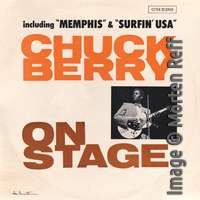
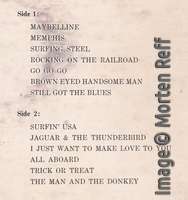
Maybe due to complaints — Hey, I bought Surfin' USA from Chuck Berry but it isn't on the disk! — some time later the company quietly replaced the cover with a slightly corrected version. Now on the front cover "Surfin' USA" became "Maybelline" [sic], and within the track listing "Surfin' USA" became "Sweet Little 16" [sic]. Also the song sequence on Side 1 is now as it is on the record. Since also the Chess logo in the upper right corner changed, this variant may have been released a year or more later.
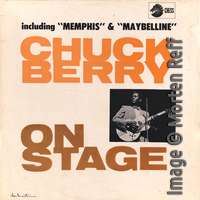
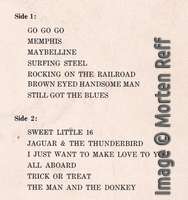
The record itself including the printing on the labels did not change, though. Side 2 still incorrectly lists "Surfin' USA".
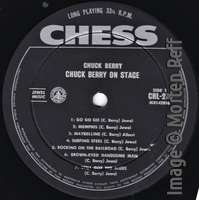
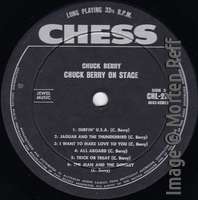
THE NETHERLANDS
In the Netherlands, Berry's Chess records were released by Artone on their Funckler label. They designed their own cover for the On Stage album. When it came out as Funckler MGCH-9218 in March 1964, "Sweet Little Sixteen" already made it to the front cover correctly. However, "Surfin' USA" is still there, this time as an incorrect title for "Cryin'/Surfing Steel". This error is both on the front cover and in the track listing on the back.
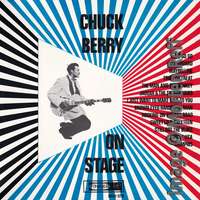
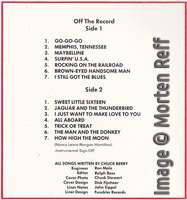
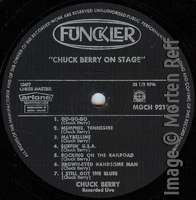
Again, some time later Artone re-released the record. The had now licensed the Chess label name and logo and were releasing the records under the Chess International label. While exchanging the Funckler logo on cover and label, they also corrected the song title. On Chess International PAR-106 "Surfin' USA" was replaced by "Surfin' Steel" (keeping the apostrophe) on both cover and label.
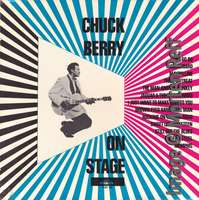
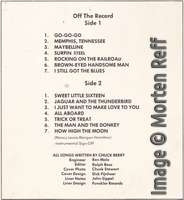
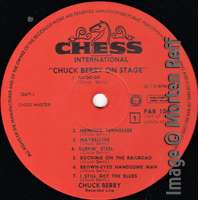
One should note that Artone changed covers, labels and even packaging often. Either they printed too few copies or they sold much more than expected. According to Morten's research, the Funckler version also exists with an orange color label. The Chess International version has the album name printed in red on some copies while it's printed in black on others. Finally PAR-106 exists in a standard LP cover (with spine, open at only one side) as well as in the Artone-typical plastic sleeve. Artone tried to establish selling albums in a clear plastic sleeve which could be used for all LPs unchanged. The cover printing was on a folded thin cardboard open at three sides which was easier and cheaper to produce. Records by all the Artone labels such as Funckler, Prestige and even CBS International were released this way. This kind of packaging did not prevail, though. Even Artone finally came to use the industry standard glued cover.
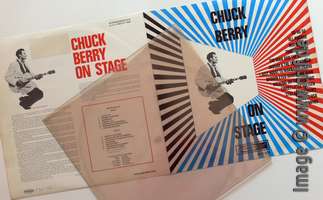
And no, Morten is not sure that he has all the existing variants.
Thanks to Morten for the images and details plus thanks to Arne Wolfswinkel and Frank Jochemsen for background information about the Artone packaging.
Sunday, April 21. 2019
Stephanie Bennett on the Making of Hail! Hail! Rock 'n' Roll

And while Bennett, director Taylor Hackford, and musical director Keith Richards definitely tried to celebrate Berry in this movie, we all know that Berry's cooperation was less than sufficient. To Berry this was just another business project he got paid for.
Due to this, production of the movie was more than chaotic. Despite of what ended up in the movie, Berry did not help making it, but instead helped to destroy Hackford's and Richards' work and intentions.
Mrs. Bennett says that Berry's passing two years ago brought back all the memories about the creation of this film. While discussing the thirty years old events with their teammates, she decided to write a book about this once-in-a-lifetime experience. Now the book is out, published by Vireo/Rare Bird Books in the U.S. and available through all bookstores. It is called "Johnny B. Bad — Chuck Berry and the Making of Hail! Hail! Rock 'n' Roll", 220 pages thick, hardcover bound and including a selection of color photographs.
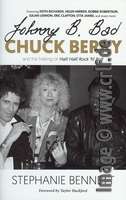
The title page says "written by Stephanie Bennett" while the inner page says "written by Stephanie Bennett with Thomas D. Adelman" who was the line producer of the movie. In fact, the book wasn't written by either. Mrs. Bennett calls her book an 'oral history'. This means it is a collection of quotes of what the team members remember from the movie production.
Tom Adelman remembers a lot, so does Stephanie Bennett. But most of the quotes are old. There's a two-page quote by Bruce Springsteen about backing up Berry one time. But this isn't a new quote from an interview done for this book. It is word-for-word in the movie itself.
Most of the readers here will own the DVD version of the movie. Most will own the 2006 two-DVD set or even, as recommended here, the four-DVD set containing all the bonus material. And if you own these DVDs, you already know most of the quotes.
For instance the first chapter is a "conversation with Chuck Berry and Robbie Robertson". And this is a word-for-word transcription of the half-hour film "The Burnt Scrapbook — Robbie Robertson and Chuck Berry's Scrapbook" which is on DVD 3. (Unfortunately typed by someone who didn't watch the film, as Chuck Berryn becomes Chuck Barron in the book.)
Chapter two is "Chuck Berry, Bo Diddley & Little Richard" and — you guessed it — is a word-for-word transcription of the 90-minute "Witnesses to History #1" which is also on DVD 3. Thus while you have reached page 56 of the book, all you got is that someone read to you the contents of DVD 3.
Most stories told and many, many of the other quotes are taken from "The Reluctant Movie Star — The bizarre tales of the making of Hail! Hail! Rock 'n' Roll" which is a one-hour film on DVD 2 of the set. This includes both the Algoa incident and the concert recording memories.
Of course there also is original material in the book. Especially the story about the team checking out Berry's performance at the Chicago Blues Festival (where Richards performed with Berry), the stories about the visit to Richards' home in Jamaica, and the things that happened after the shooting of the movie haven't been told yet, at least not to this detail. Unfortunately the original material is less than half of the book.
To those who are purely interested in the musical aspects of Berry's work, there is a single page which is of interest. In between the nice color photo section you'll suddenly find a one-page type-written sheet called "Song Selection".
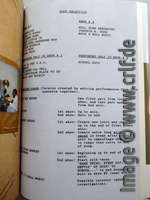
On this page we get an exact description of the songs which made it into the movie. This includes the show number they were taken from. And it includes a list of those "recordings" which have been combined from the performances in show one and show two.
Another interesting fact from the book is that the concert recordings have been overdubbed twice. There was one overdub session at Berry Park where Billy Youdelman re-recorded some of the vocals for the movie's audio track. And there was a second overdub session in which Don Wershba re-recorded some of the vocals for the soundtrack album. (This is why we get two different vocal overdubs for "Roll Over Beethoven".) Trying to further fill the missing pieces in our database I asked Mrs. Bennett, Mr. Youdelman, and Mr. Wershba whether they have any notes left telling about the dates and places of the overdubs. All three were so kind to reply to my inquiry but unfortunately Mrs. Bennett has no paperwork regarding these topics. Billy Youdelman cannot remember the exact date but that it was shortly after the concert and that it was only a one or two day job, and not very long. Don Wershba's memories are worth another blog entry due soon.
Whether you will want to buy the book depends on your preference of reading vs. watching DVDs. And of course on whether you own the DVDs. It's a nice read, but as said, it's old news. Many of the quotes you will have heard before. Some of the newly told anecdotes, especially by Hackford, Bennett and Adelman, might be worth the price of the book, though. And if you wonder why actress Helen Mirren comments on the story as if she was part of the movie, keep in mind that she is married to Taylor Hackford and accompanied him throughout the making of this film.
Do not miss to visit the book's own website johnnybbadbook.com. It contains a lot of interesting photos as well as videos with Hackford and Bennett telling some of the stories.
Many thanks to Julia Callahan of Rare Bird Books, Stephanie Bennett, Billy Youdelman, and Don Wershba for answering my additional questions.
Main Page
This weblog is an addition to my Chuck Berry fansite called "A Collector's Guide to the Music of Chuck Berry" which describes all books and records of interest to everyone enjoying Chuck Berry's music.
Categories
What You Missed
Some earlier but important entries:
- Unanswered questions about the recording of Memphis, Tennessee
- Sweet Little Eight Variants of Sweet Little Sixteen
- The Johnny B. Goode Session
- Chuck Berry in Stereo
- Chuck Berry's Recording Session for Volkswagen
- Chuck Berry's Recording Session for Dr Pepper
- Tim McFarlin Introduces the Berry-Johnson Test into American Copyright Law
- Chuck Berry's Early Recording Locations
- Run! Rudolph, the Red-Nosed Reindeer â and the copyright mystery
- Chuck Berry live in New York 1956
- The very first Chuck Berry LP album
- The Chuck Berry On Stage (Chess LP-1480) confusion continues
- The Chuck Berry Vinyl Bootlegs, Vol. 1: Rare Berries
- Rocksmuk album - bootleg or not?
- 6034 cover versions of Chuck Berry songs
- Chuck Berry's Greatest Hits (Chess LP-1485) variants
Recent Entries
- CHUCK100 Tribute EP Series
- Thursday, January 16 2025
- CBID - Corrections, Additions, New Covers
- Friday, January 10 2025
- Rhythm and Rhyme - Chuck Berryâs poetic heartbeat
- Sunday, December 22 2024
- CBID - 6034 and counting ...
- Friday, November 1 2024
- CBID - 6034 cover versions of Chuck Berry songs
- Friday, July 5 2024
- CBID - The Never Ending Story - pt. 9
- Monday, June 10 2024
- CBID - The Never Ending Story - pt. 8
- Tuesday, June 4 2024
- CBID - The Never Ending Story - pt. 7
- Monday, April 22 2024
- Peter OâNeilâs So-Called Disorder
- Friday, April 12 2024
- The Chuck Berry Sound according to Atomicat
- Wednesday, April 10 2024
- CBID - The Never Ending Story - pt. 6
- Wednesday, April 3 2024
- CBID - The Never Ending Story - pt. 5
- Saturday, March 16 2024
- CBID - The Never Ending Story - pt. 4
- Monday, February 19 2024
- CBID - The Never Ending Story - pt. 3
- Monday, February 5 2024
- CBID - The Never Ending Story - pt. 2
- Monday, January 22 2024
- The Chuck Berry Vinyl Bootlegs, Vol. 3: America's Hottest Wax
- Tuesday, January 16 2024
- Chuck Berry in Fake Stereo
- Friday, January 12 2024
- CBID - The Never Ending Story
- Thursday, January 11 2024
- CBID - 5639 cover versions of Chuck Berry songs
- Tuesday, October 31 2023
- CBID - Covers, Chart Listings, and Not-Covers
- Monday, August 28 2023
- CBID - And they play Chuck Berry music - final part 10
- Monday, March 27 2023
- Little Queenie overdubs
- Monday, March 13 2023
- CBID - And they play Chuck Berry music - part 9
- Saturday, March 4 2023
- Lonely School Days - the variants explained
- Tuesday, January 31 2023
- An Interview with Johnnie Johnson - 1987
- Sunday, January 29 2023
Search
Copyright and Disclaimer
© Dietmar Rudolph
No part of this document may be used or published without written consent by the author.
Impressum/Haftungsausschluss/Datenschutz/Disclaimer
To contact the authors, email to cbguide@crlf.de.
